Learning & Teaching
Learning and Teaching encompasses the following areas: Student Outcomes, Curriculum, Assessment, Reporting, Principles and Pedagogy.

Learning & Teaching
Learning and Teaching encompasses the following areas: Student Outcomes, Curriculum, Assessment, Reporting, Principles and Pedagogy.
The Year Level Curriculum Overviews
The Curriculum Overviews are designed to give you an insight into what your children will be learning this term. We aim to keep you well-informed and engaged in your child's academic journey. It is an essential component of the educational reporting process, providing a clear and structured outline of what students will learn throughout Term 3. Our curriculum overviews are not just an informational tool but a vital part of our reporting process.
Our Term 3 overviews provide information on the key subjects, topics, and skills that will be covered in each grade level. By providing this overview, we hope to give you a clearer understanding of our educational goals and the exciting learning experiences your children will be participating in.
We encourage you to explore these overviews and discuss them with your children. Your involvement and support are invaluable in helping them achieve their full potential. Whether it's through assisting with homework, attending school events, or simply talking about what they're learning, your engagement makes a significant difference.
Each week, the school newsletter examines student learning, successes, and classroom activities in greater depth. Leaders include resources, tips, and activities for parents and students to use at home, extending learning beyond the classroom.
Overall, our newsletter is a valuable tool for communication, collaboration, and community building within the school environment.
At St Fidelis, reading at home is an integral part of the school’s reading program. Research shows the importance of reading on a daily basis to develop children’s use and understanding of vocabulary.
At St Fidelis, the expectation is that students read each night as part of their homework and record either on the sheet provided in their Reader Bag or in their diary. Students have the opportunity to borrow take home books/readers from the school’s ‘Take Home Collection’.
The purpose of take home readers is to provide students with books at their level of reading. Students have a ‘Reader Bag’ and this should be returned to school each day. Students are asked to take care of the books so that they are not damaged. In addition, they are reminded that it is their responsibility to ensure that each book borrowed is returned before borrowing any further books. Parents please remind your child/children of the privilege associated with borrowing books and the necessity to return.
Happy reading everyone!
CBCA Book Week 2024 Commences Saturday, 17 August – Friday, 23 August, Week 6 of the term. This year’s theme is Reading is Magic. Save the date: Book Week Assembly/Parade Friday, 23 August at 9 am. Free DIY costume inspiration
Shortlisted Books - Categories:
BEING JIMMY BAXTER by Fiona Lloyd
HUDA WAS HERE by H. Hayek
REAL PIGEONS FLAP OUT by Andrew McDonald Illustrated by Ben Wood
SCAR TOWN by Tristan Bancks
SCOUT AND THE RESCUE DOGS by Dianne Wolfer Illustrated by Tony Flowers
THE SIDEWAYS ORBIT OF EVIE HART by Samera Kamaleddine
BEAR & DUCK ARE FRIENDS by Sue deGennaro
CAN YOU TEACH A FISH TO CLIMB A TREE? By Jane Godwin
GRACE AND MR MILLIGAN by Caz Goodwin
GYMNASTICA FANTASTICA! By Briony Stewart
ONE LITTLE DUCK by Katrina Germein Illustrated by Danny Snell
THE CONCRETE GARDEN by Bob Graham
BOWERBIRD BLUES by Aura Parker
EVERY NIGHT AT MIDNIGHT by Peter Cheong
IF I WAS A HORSE by Sophie Blackall
PAPER-FLOWER GIRL by Mateja Jager Written by Margrete Lamond
THAT BIRD HAS ARMS by Niharika Hukku and Ronojoy Ghosh Written by Kate and Jol Temple
TIMELESS by Kelly Canby
AUSTRALIA: COUNTRY OF COLOUR by Jess Racklyeft
COUNTRY TOWN byIsolde Martyn and Robyn Ridgeway Illustrated by Louise Hogan
EWW GROSS: FOUL FACTS AND PUTRID PICTURES by Dan Marshall
OUR COUNTRY: WHERE HISTORY HAPPENED by Mark Greenwood Illustrated by Franè Lessac
TAMARRA: A STORY OF TERMITES ON GURINDJI COUNTRY by Violet Wadrill, Topsy Dodd Ngarnjal, Leah Leaman, Cecelia Edwards, Cassandra Algy, Felicity Meakins, Briony Barr, Gregory Crocetti
THIS BOOK THINKS YA DEADLY! By Corey Tutt Illustrated by Molly Hunt
ETTA AND THE SHADOW TABOO by Jeremy Worrall
GRACE AND MR MILLIGAN by Pip Kruger
HOPE IS THE THING by Erica Wagner
PHONOBET by Kim Drane
RAISED BY MOTHS by Michelle Conn
WHEN YOU’RE A BOY by Blake Nuto
St Fidelis’ School Book Fair commences on 20/08/2024 until 26/8/2024. So please come by and support our school whilst getting your hands on the best new children’s books! Opening times to be announced soon.

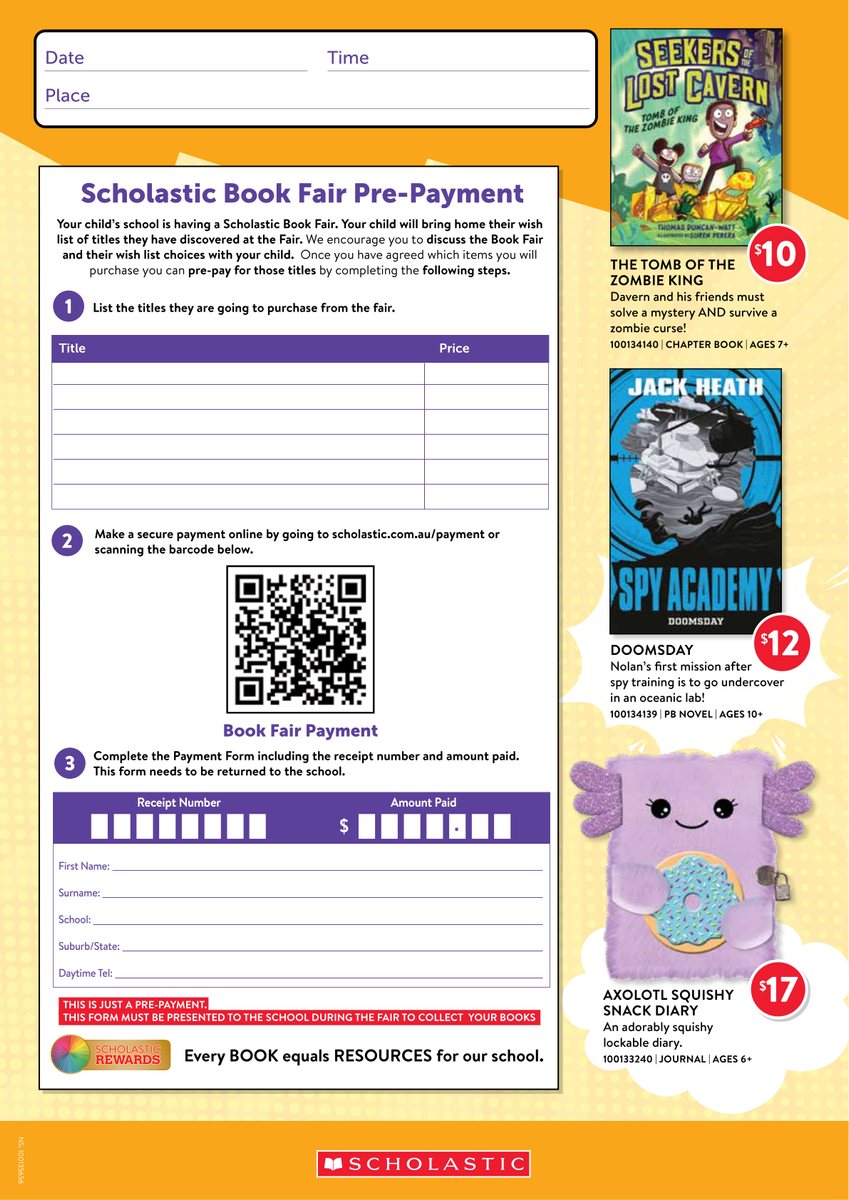


Have a great week.
Bernadette Parnis
bparnis@sfmoreland.catholic.edu.au


Thank you to the parents that have placed their order on this Issue of Book Club! There is still time to order if you haven't already. Orders due THIS Wednesday July 31.
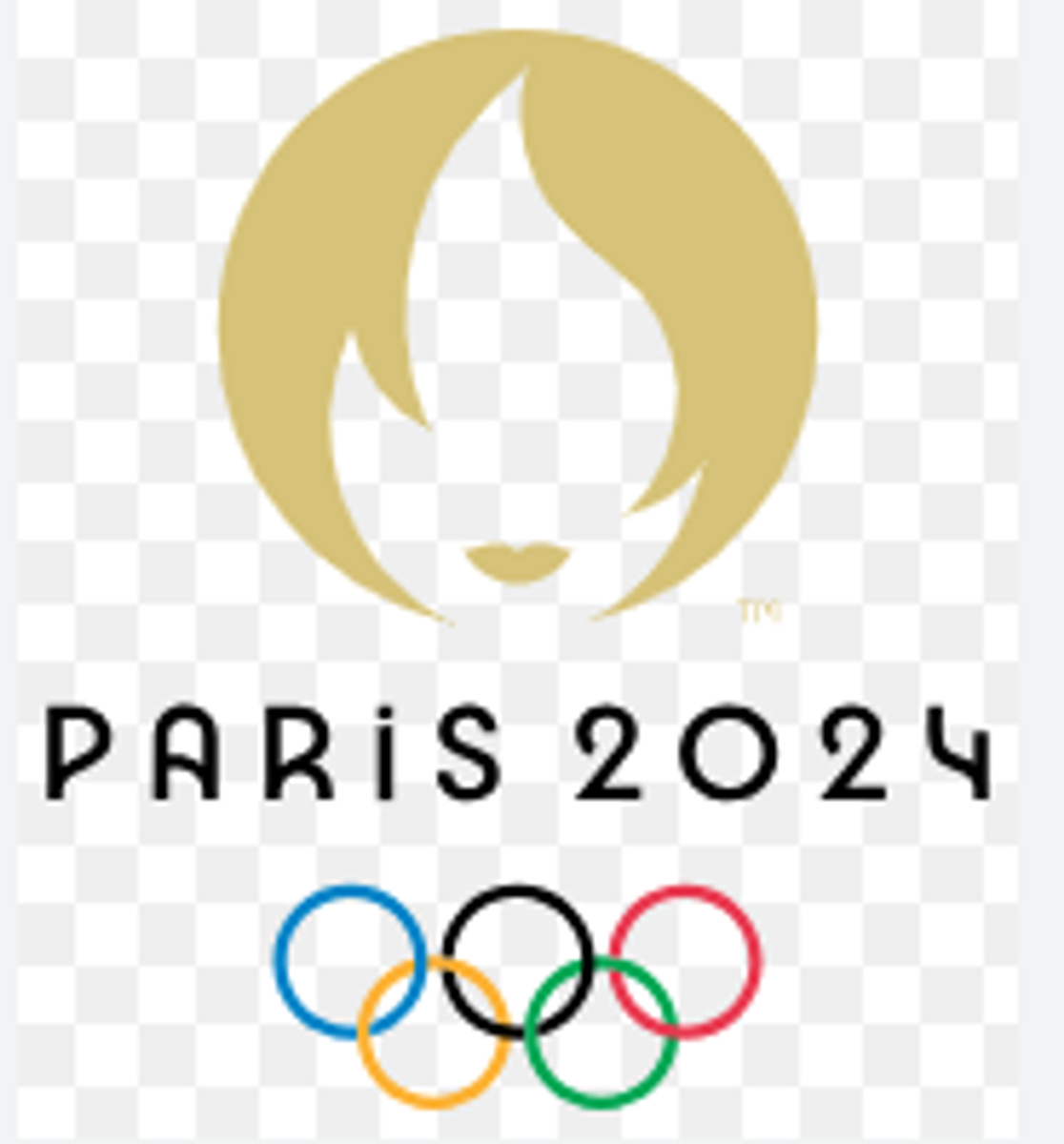

How exciting that the Paris Olympics are happening now! If you're watching or interested in the events, take note of the scores, times, distances, and medals achieved. There's so much real-life maths involved in these events!
Visit the Paris Olympics schedule and see what time the events are on. What time is that here in Melbourne? https://www.nbcolympics.com/full-schedule
I'm also listing a few mini Olympic activities inspired by Angela Rogers' article in this month's Prime Number journal. https://drive.google.com/file/d/1kcUvHOC7b9TKfkrJH_1dnN3JJrlCLqN1/view?usp=drive_link
You may like to do some of these activities at home with your children.
Currently across the school in Years 1-6 we are teaching Multiplication. The skills needed are as follows:
Year 1
Year 2
Year 3
Year 4
Year 5
Year 6
How do I help my child learn their multiplication facts? Adapted from Randall Charles
Fact strategies are considered a crucial second phase in a three-phase program for teaching students basic math facts.
The first phase is concept learning. Here, the goal is for students to understand the meanings of multiplication and division. In this phase, students focus on actions (i.e. “groups of”, “equal parts”, “building arrays”) that relate to multiplication and division concepts.
An important instructional bridge that is often neglected between concept learning and memorization is the second phase, fact strategies. There are two goals in this phase.
First, students need to recognize there are clusters of multiplication and division facts that relate in certain ways. Second, students need to understand those relationships. If you have students that are not ready, you will need to address the first phase of concept learning.
The third phase is memorization of the basic facts. Here the goal is for students to master products and quotients so they can recall them efficiently and accurately, and retain them over time.
Trying to get children to learn their tables isn’t just a matter of trying to recite the table facts and remember them. We need our children to understand them, what they mean, how they can retrieve them when their memory fails, what strategy helps them do this?
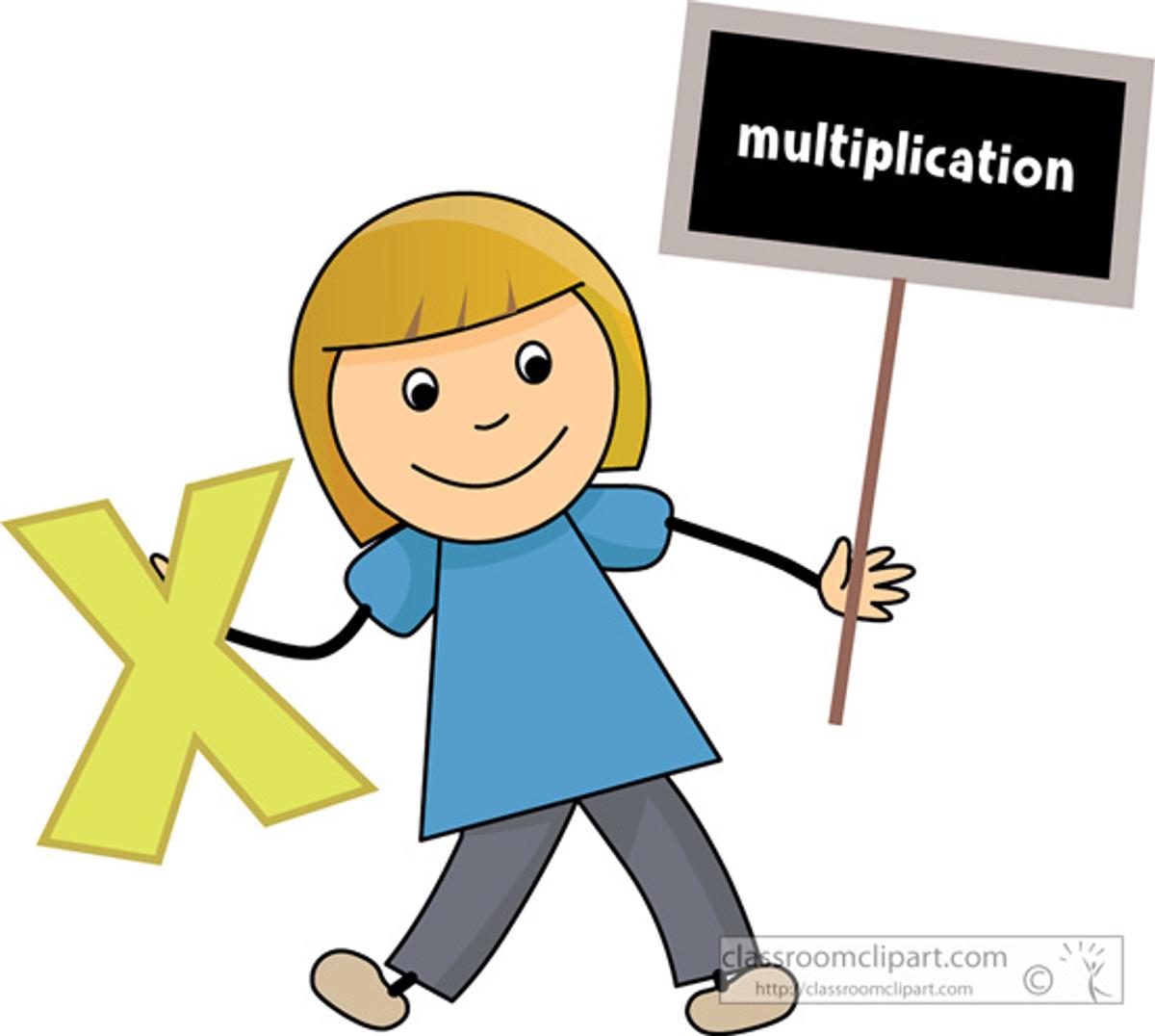

SSV Interschool Sport Competition
As you are aware, the Coburg District Athletics Carnival will be held at the Coburg Athletics Track on Wednesday 7 August 2024, commencing at 9.50am and concluding at 2.00pm. 100m, 200m, 800m, 4 x 100m relay, high jump, long jump, triple jump. discus & shot put events are conducted for the following age groups:
9/10 Years; 11 Years; 12/13 Years
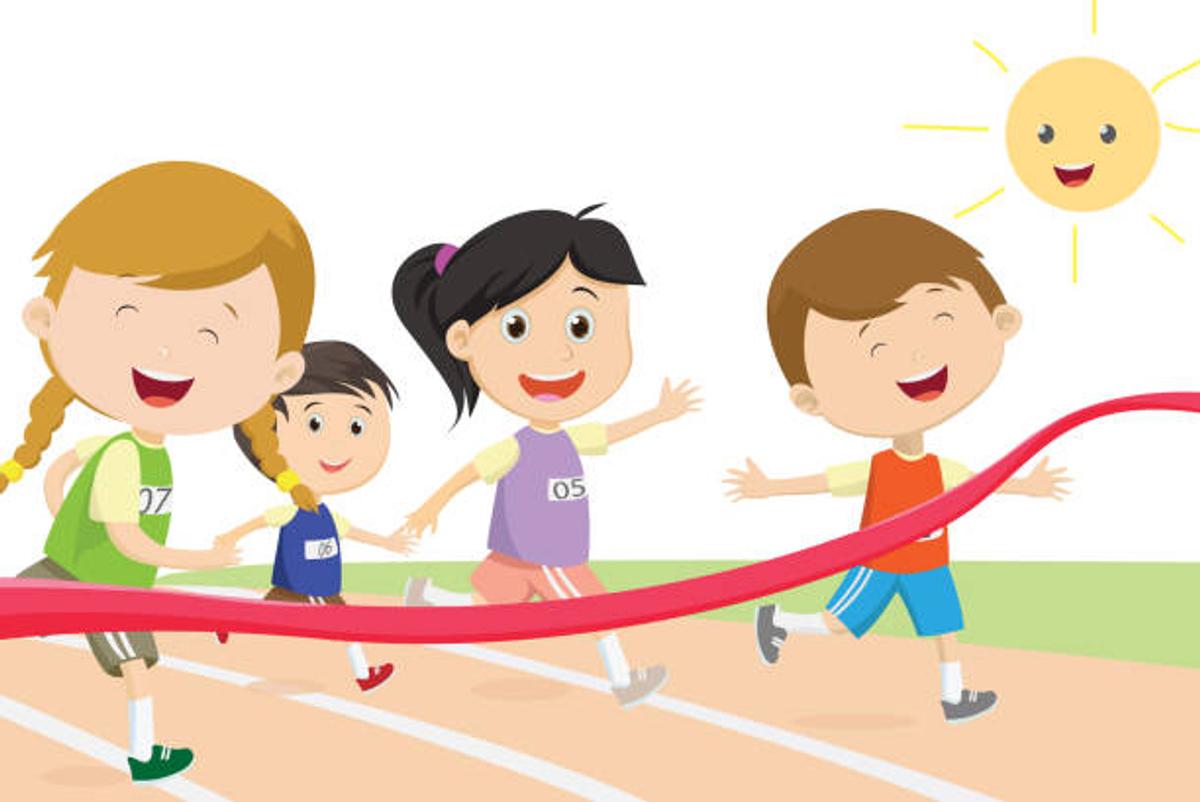

During Term 2, athletics field event trials have been conducted in our PE lessons. Last Friday, sprint heats for 100m and 200m were held. Today the final trials for 800m were held. Team selection will be completed and students notified by Wednesday.
Year 3/4 Sport
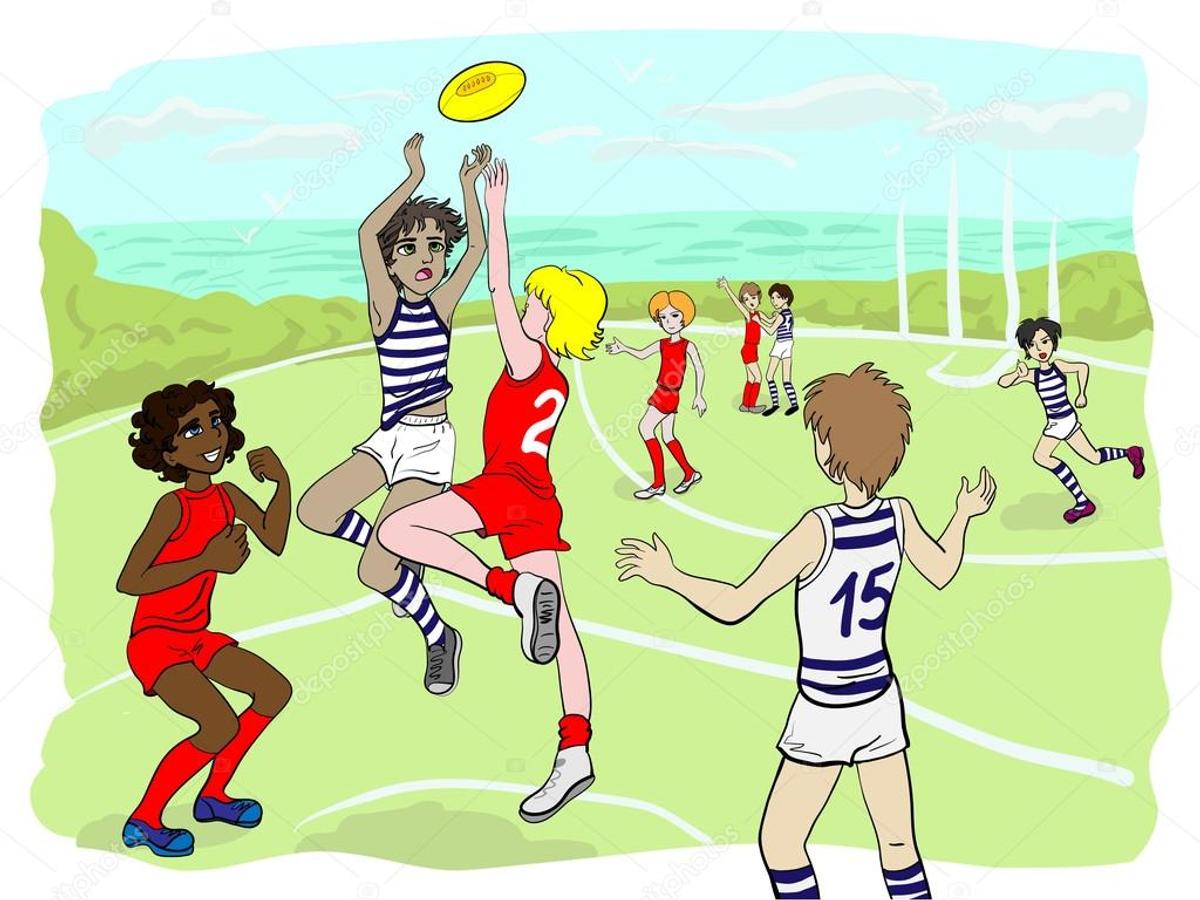

St Fidelis has received confirmation that our Year 3/4 students will participate in Australian Rules clinics conducted by a qualified coach during Term 3. Funding for these programs are provided through the Sporting Schools Funding Program. Dates will be confirmed this week.
Manchester City Soccer Clinics


As you are aware, St Fidelis was offered an opportunity for a selection of our Year 4/5 students to participate in the Manchester City Football (Soccer) Primary School Program. The program is conducted at Parade Secondary College, Bundoora. Parade College organises free transport to and from the College. The Manchester City Football Program has been developed to give primary school students an opportunity to build on their soccer skills and sportsmanship by participating in a series of workshops and drills led by the Manchester City Football School coach, Mick Bennett and their Sport Academy students. The second session of the program will be held on Wednesday 31 July.
The following participants are required to be present in the foyer outside the school office at 8.20am. The bus departs at 8.30am and arrives back at school at 11.00am.
JOE G, MAX L, ZAC A, SAM L, CALEB P, NICHOLAS M, BENJAMIN Y, ALEXANDER H, OLIVIA S, POPPY A, ZITA M, GEMMA P, CLARA P
Mick Jennings
Sports Coordinator
Foundation Students Shine in STEM with Bee-Bot Olympic Games
Last Friday, the Foundation students participated in the BeeBot Olympic Games. We explored the meaning of the Olympic Symbol and a brief history of the games.
Students collaborated with a partner to estimate how many times they needed to press forward on the BeeBot to reach the finish line. The pair that finished closest to the finish line was declared the winner.
Students had time to think about their strategy before competing in heats and then finals. Winners received gold, silver, and bronze medals. We held a medal ceremony and sang the Australian national anthem.
Afterwards, we discussed sportsmanship, resilience, and having fun. Here are some photos of Foundation students participating in the BeeBot Olympic Games!

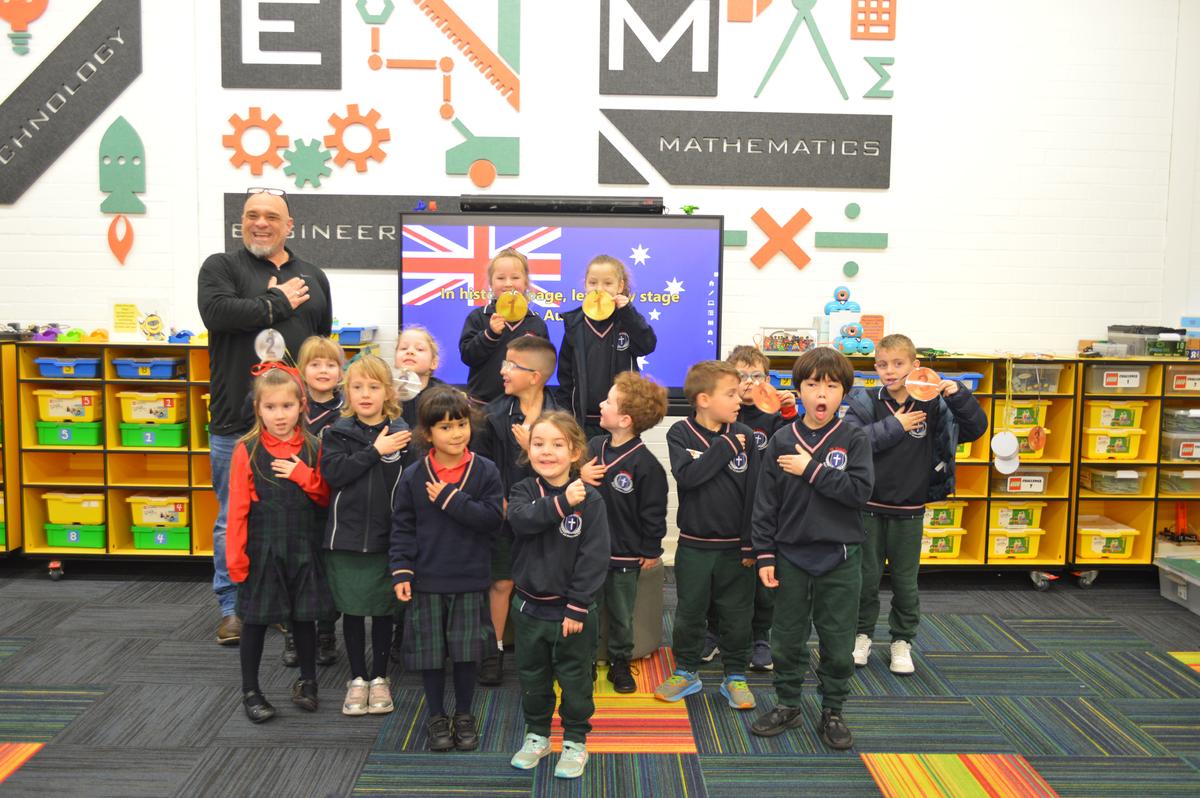
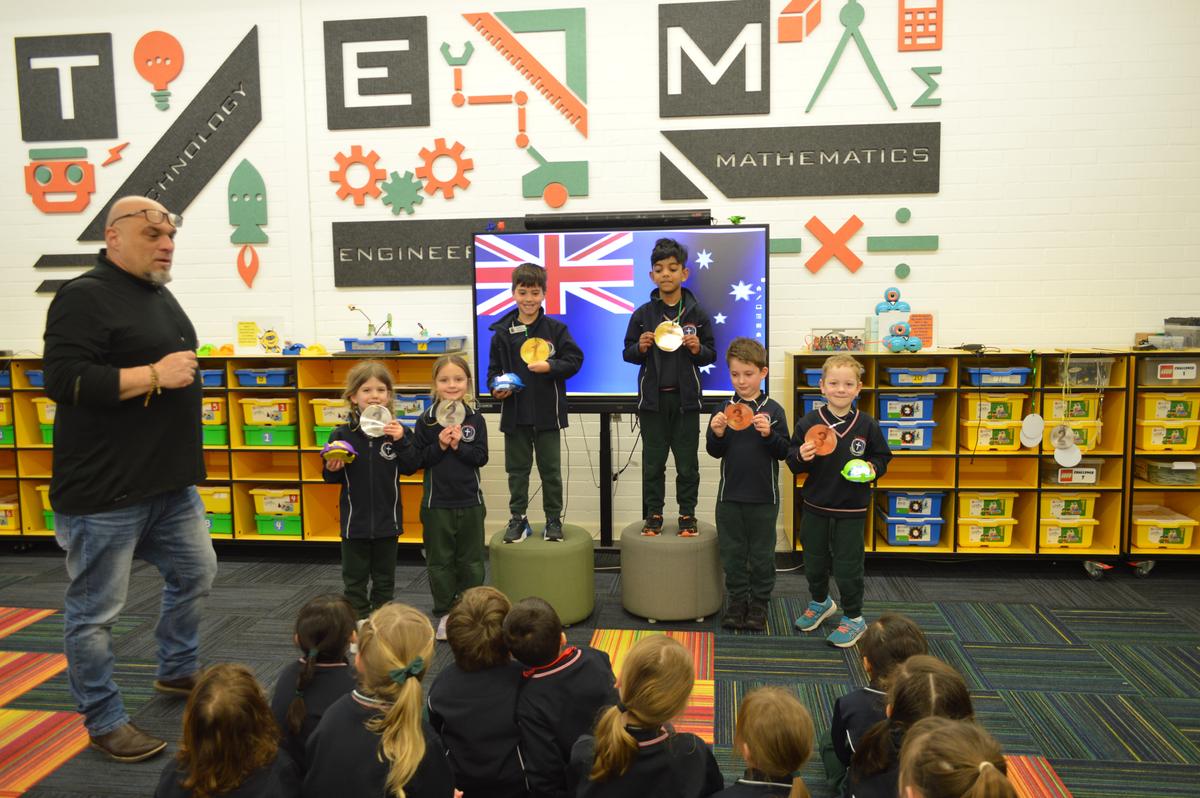
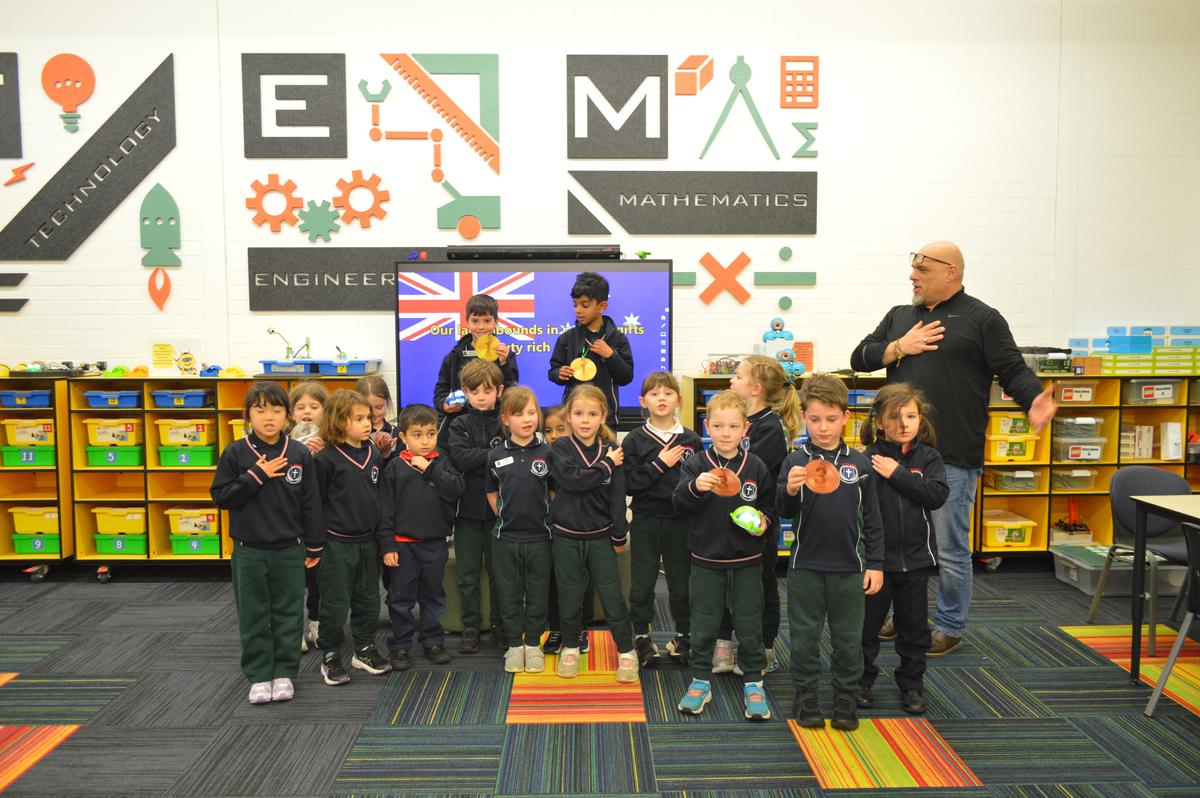
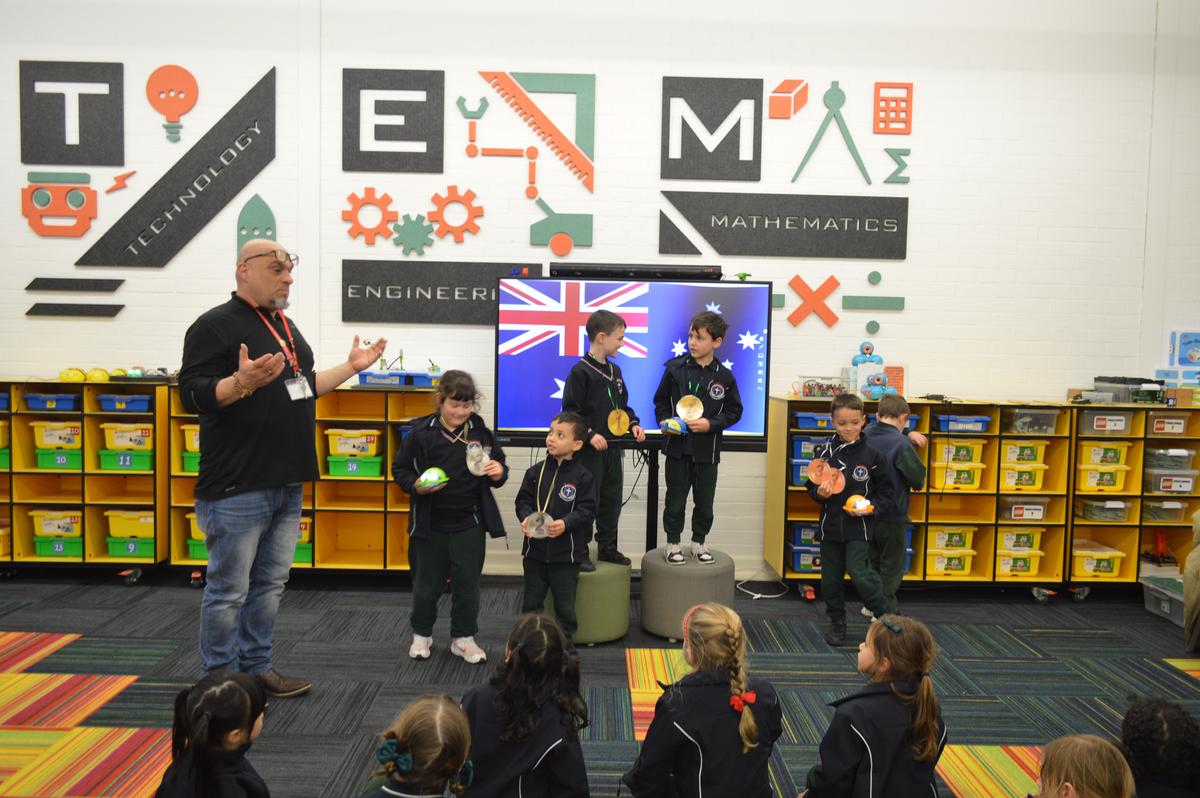
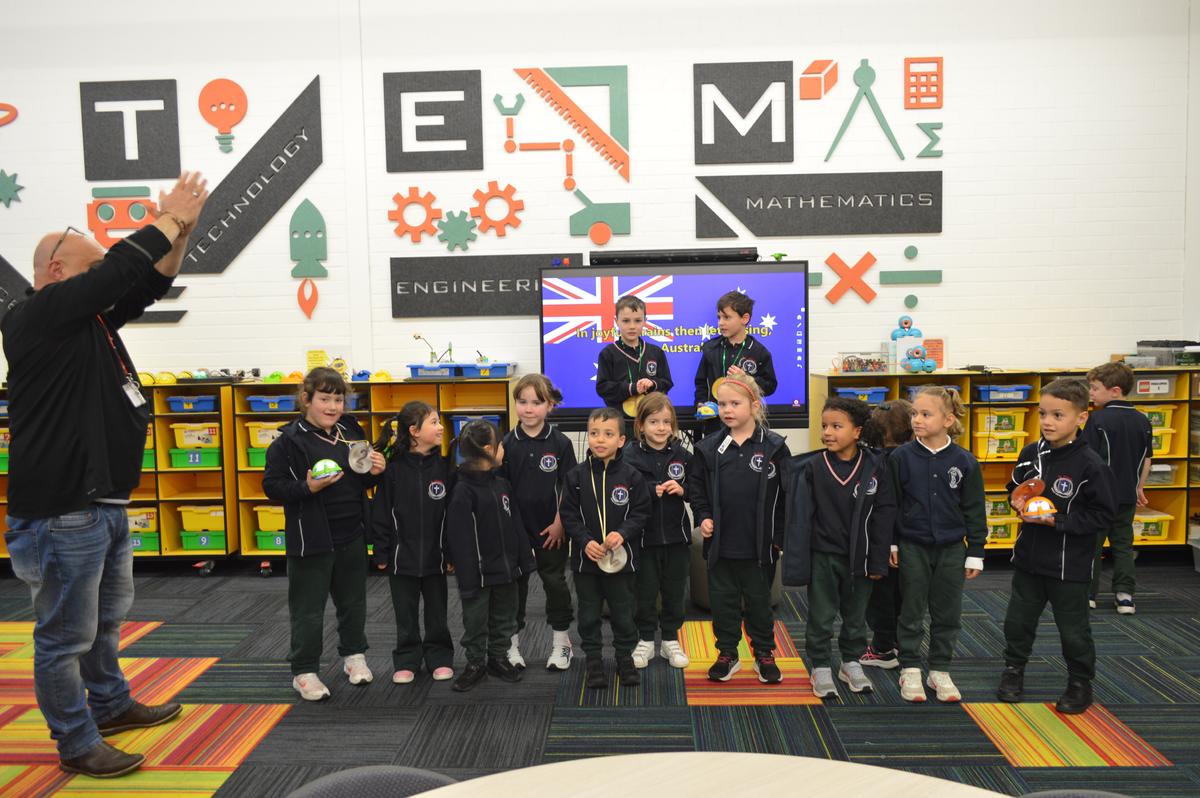






Year 1/2 Students Dive into STEM with Lego Coding Express
Over the last two weeks, our enthusiastic Year 1/2 students have embarked on an exciting journey into the world of STEM (Science, Technology, Engineering, and Mathematics) using the innovative Lego Coding Express.
This hands-on activity not only sparked their creativity but also introduced them to fundamental concepts of coding and engineering. The Lego Coding Express is a versatile learning tool that combines the fun of building with the basics of coding.
Our students used colourful Lego bricks and simple coding instructions to design and program a dynamic train loop network. Through this engaging project, they learned how to sequence commands, use sensors, and problem-solve to create a functioning train system. Watching the trains navigate the loops they built, students could see the immediate results of their programming efforts. This interactive experience not only enhanced their understanding of coding but also fostered teamwork, critical thinking, and perseverance.
We are incredibly proud of our Year 1/2 students for their enthusiasm and dedication to exploring STEM. Their achievements with the Lego Coding Express are a testament to the power of hands-on learning and the limitless possibilities of young minds at work.
Here are some photos of Year 1/2 students participating, creating, and coding the City Loop Network!
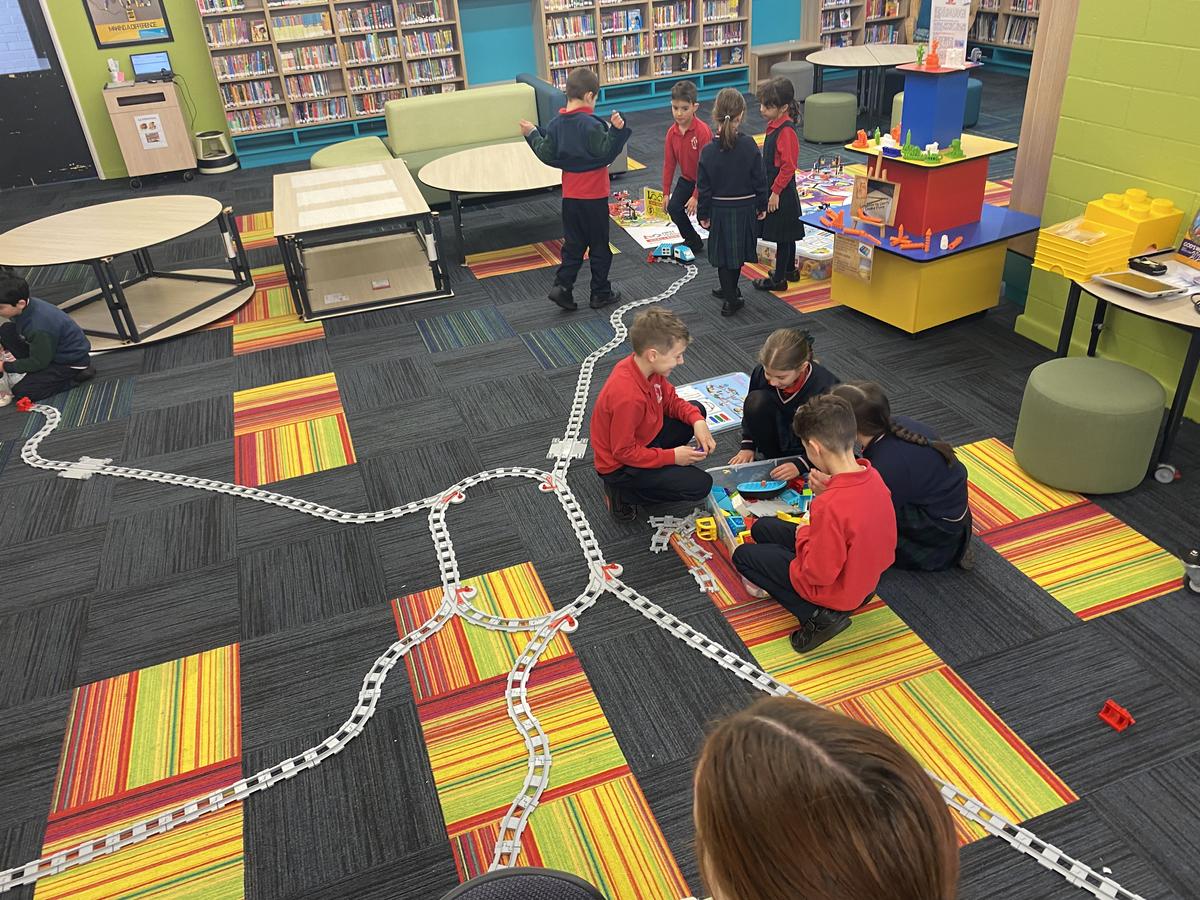
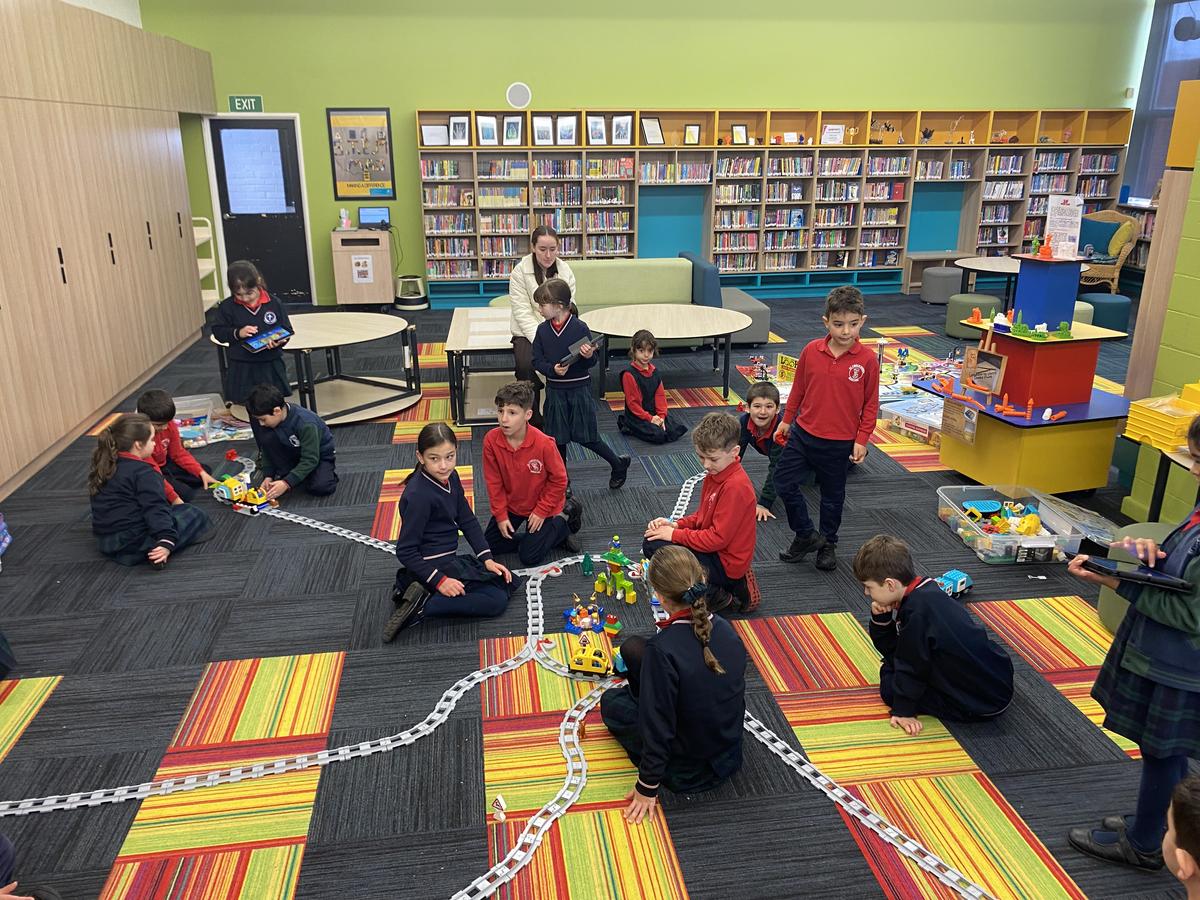
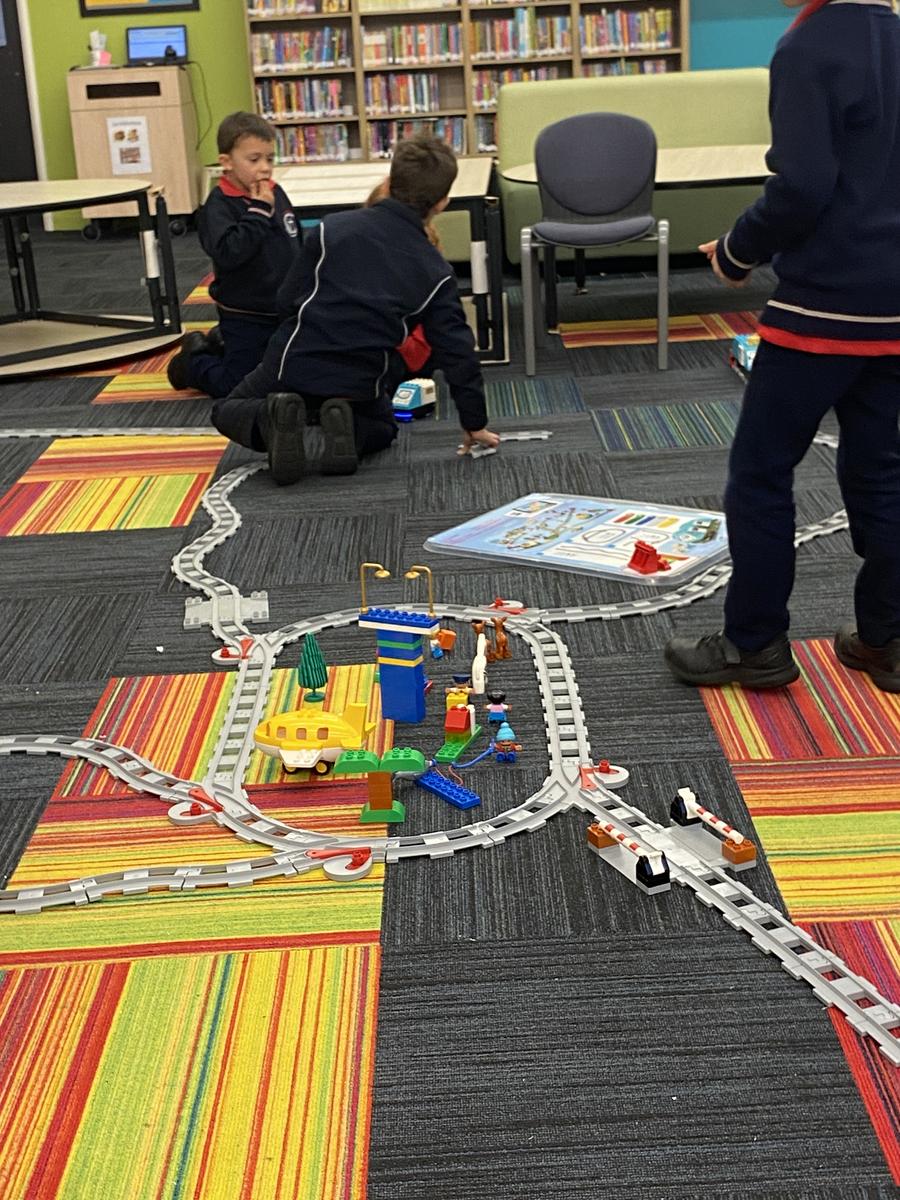
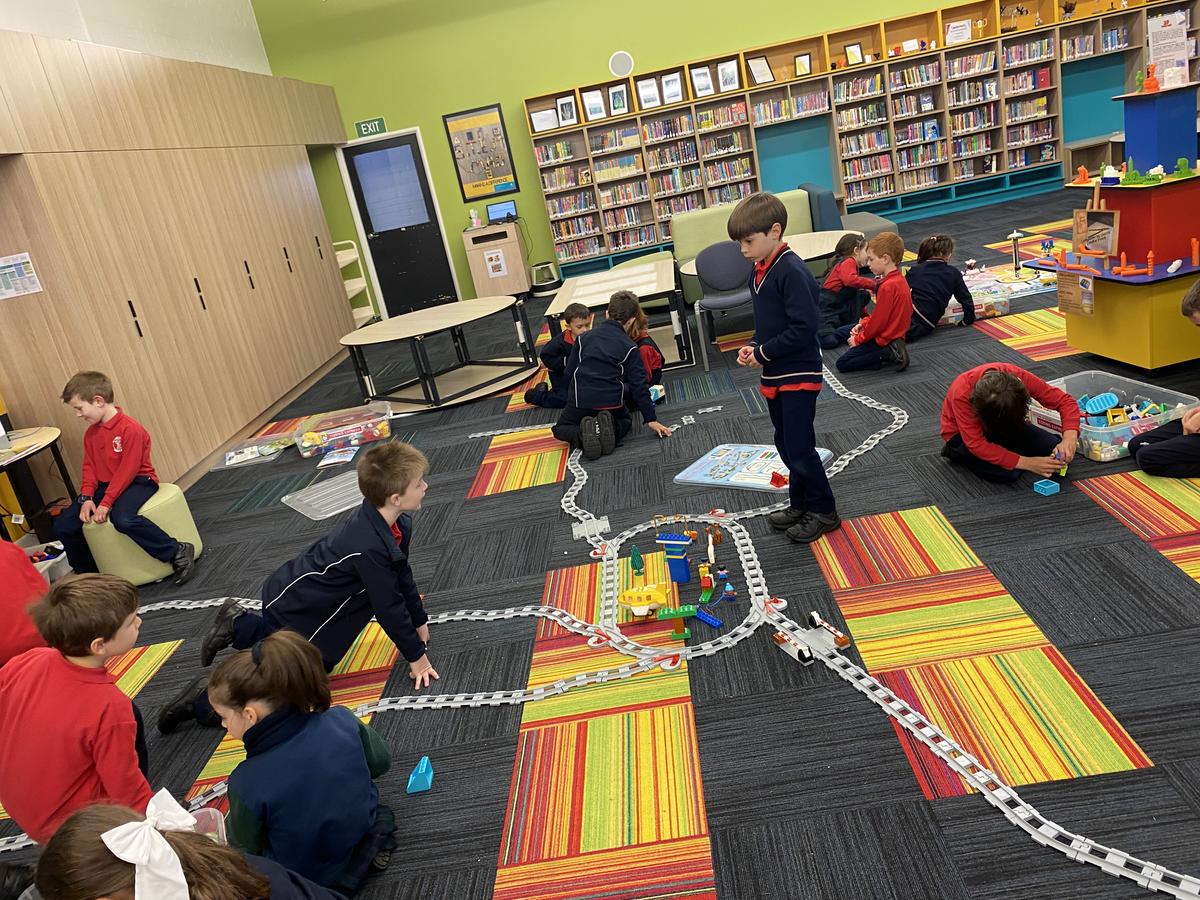
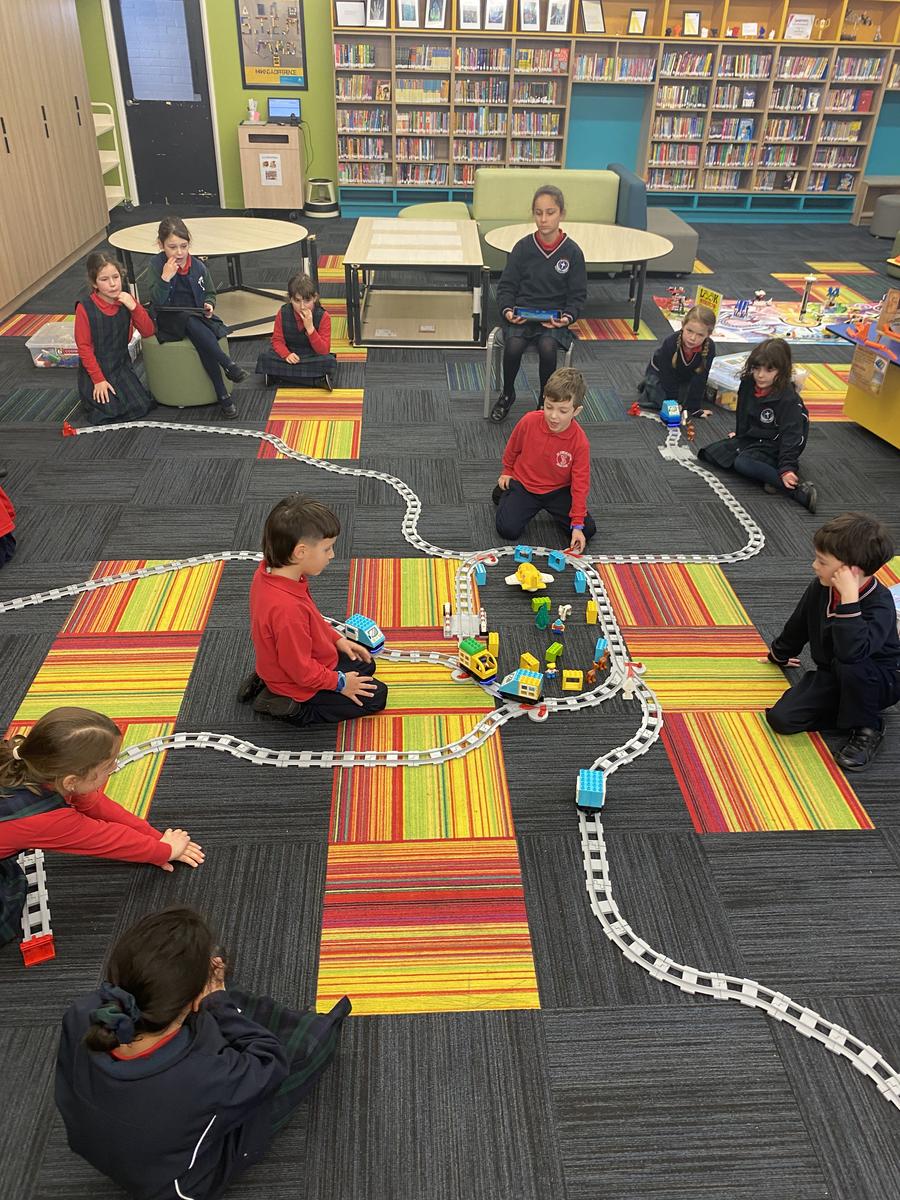
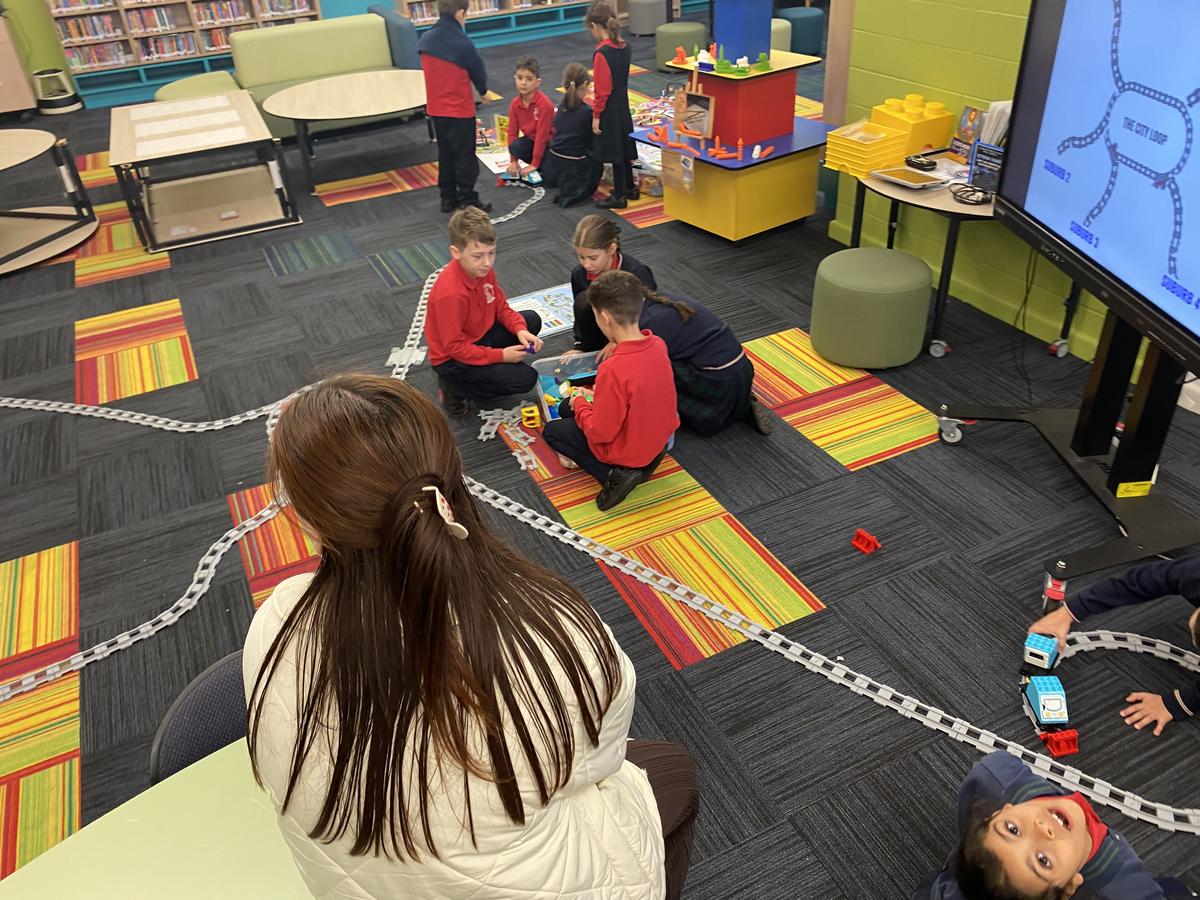


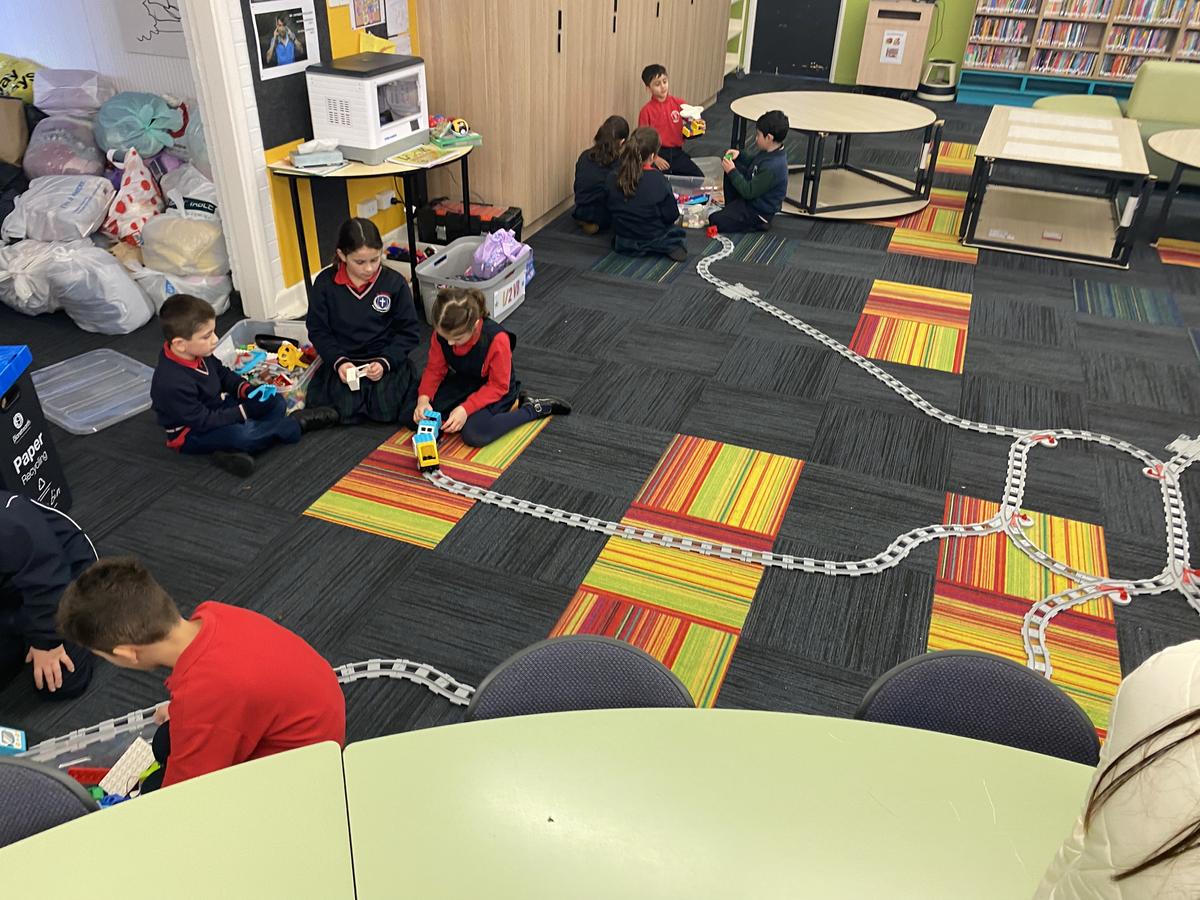









Year 5/6 Students Innovate with STEM Using Lego Spike Essential Kits
Over the past few weeks, our Year 5/6 students have been deeply engaged in a fascinating STEM (Science, Technology, Engineering, and Mathematics) project using the Lego Spike Essential kits.
Through this hands-on activity, students had the opportunity to create and code a movable vehicle equipped with a light while also exploring the intricacies of how the human eye works. The Lego Spike Essential kits provided the perfect platform for students to blend creativity with technology. Working in teams, they designed and built their own vehicles, integrating coding skills to control the movement and lighting functions.
This project challenged them to think critically and solve problems as they programmed their vehicles to navigate through a series of tasks. In addition to the engineering and coding components, students delved into the science behind vision. They learned about the structure and function of the human eye, understanding how light interacts with different parts of the eye to enable us to see. This knowledge was then applied to their projects, where they used sensors and lights to simulate aspects of human vision in their vehicles.
Here are some photos of Year 5/6 students participating, creating, and coding their vehicle.
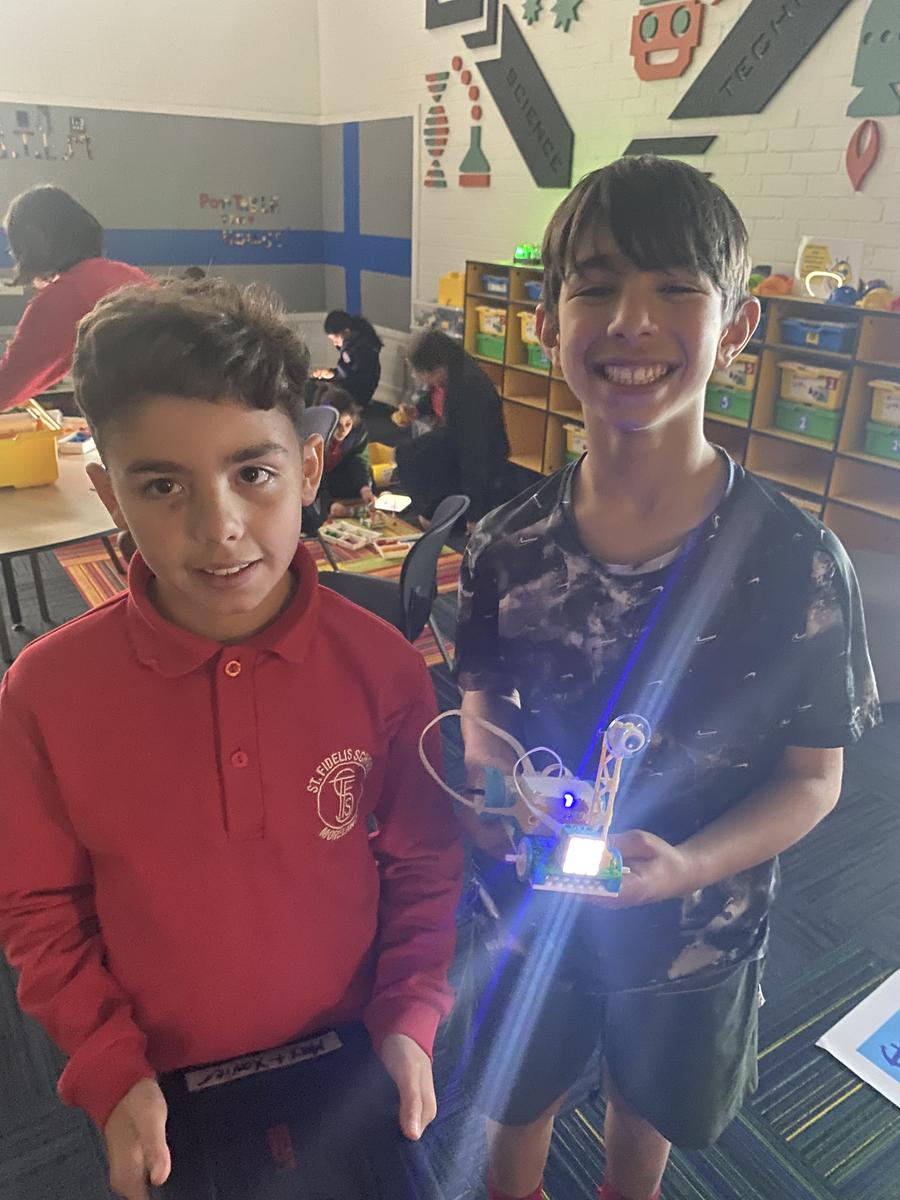
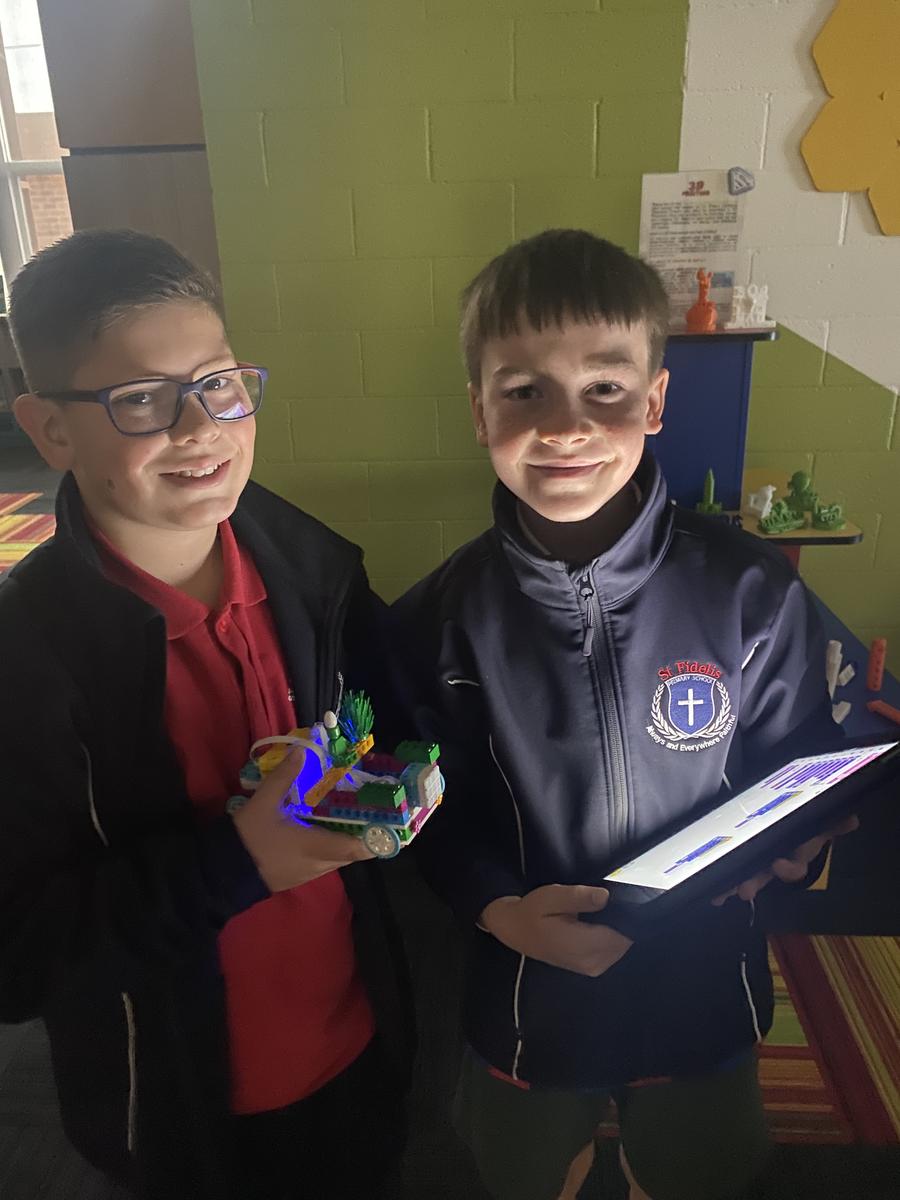
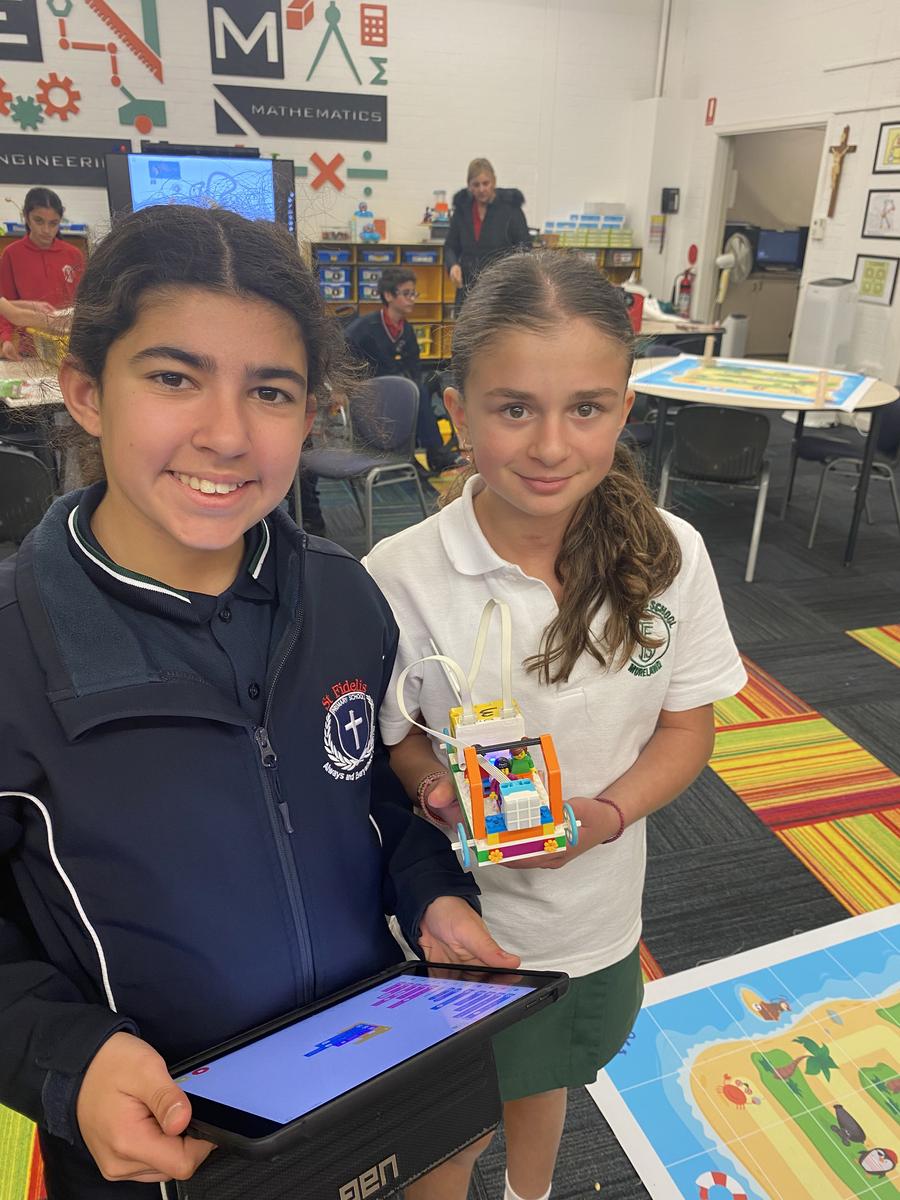
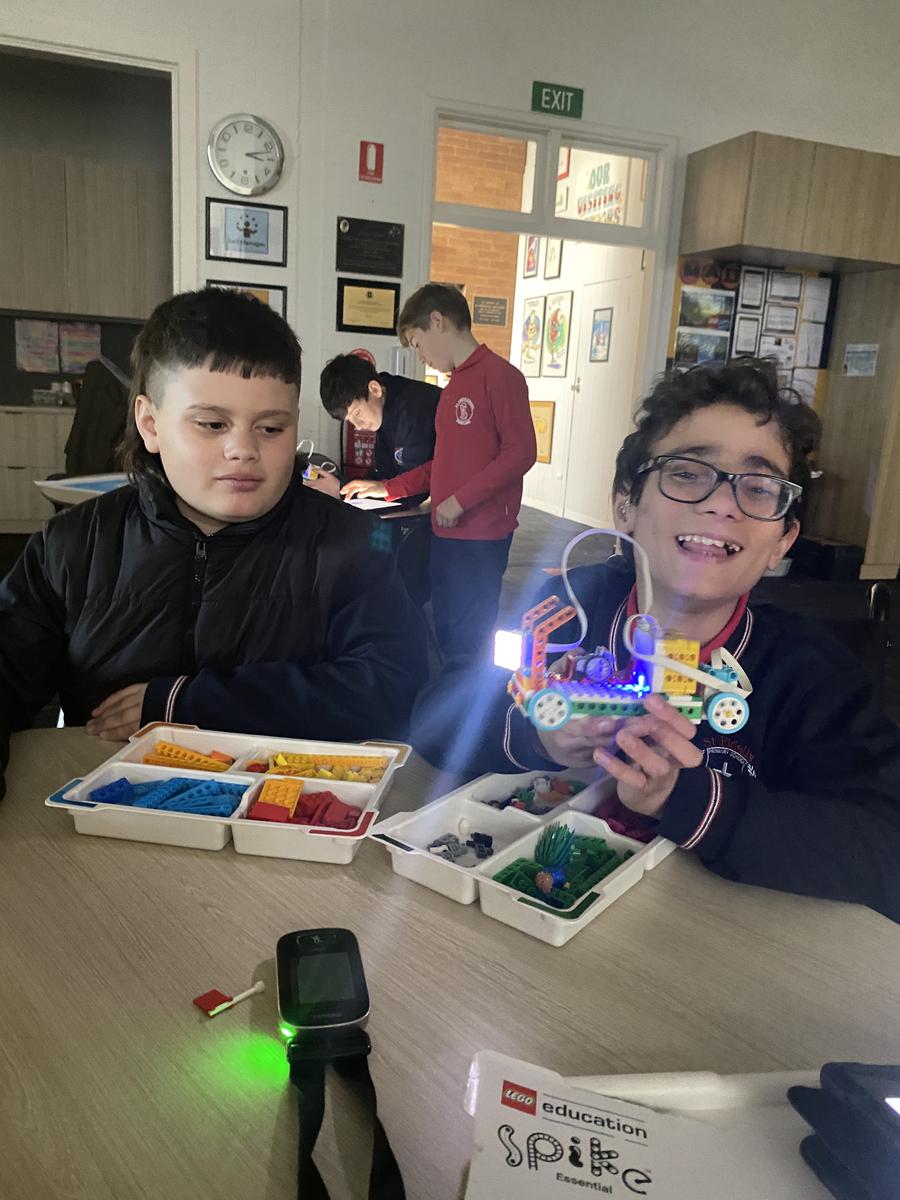
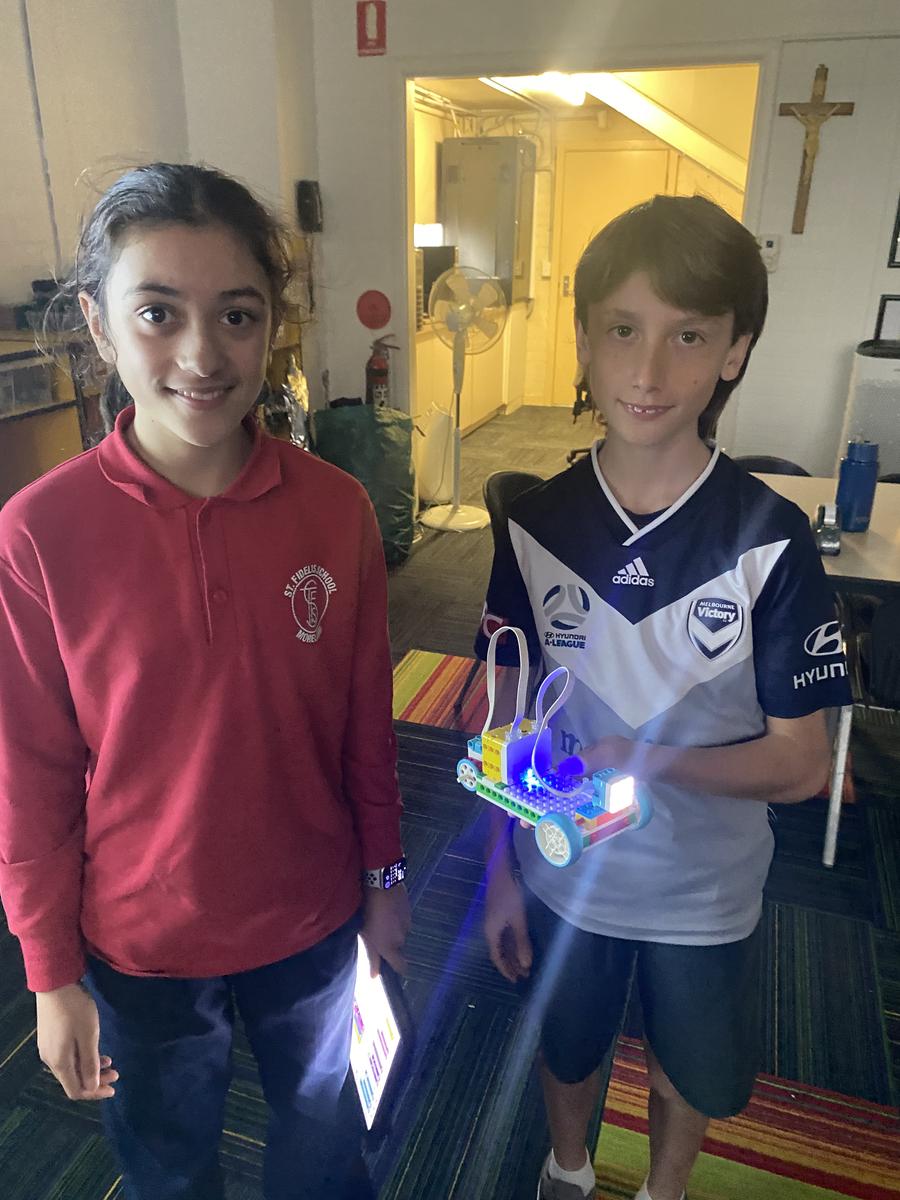
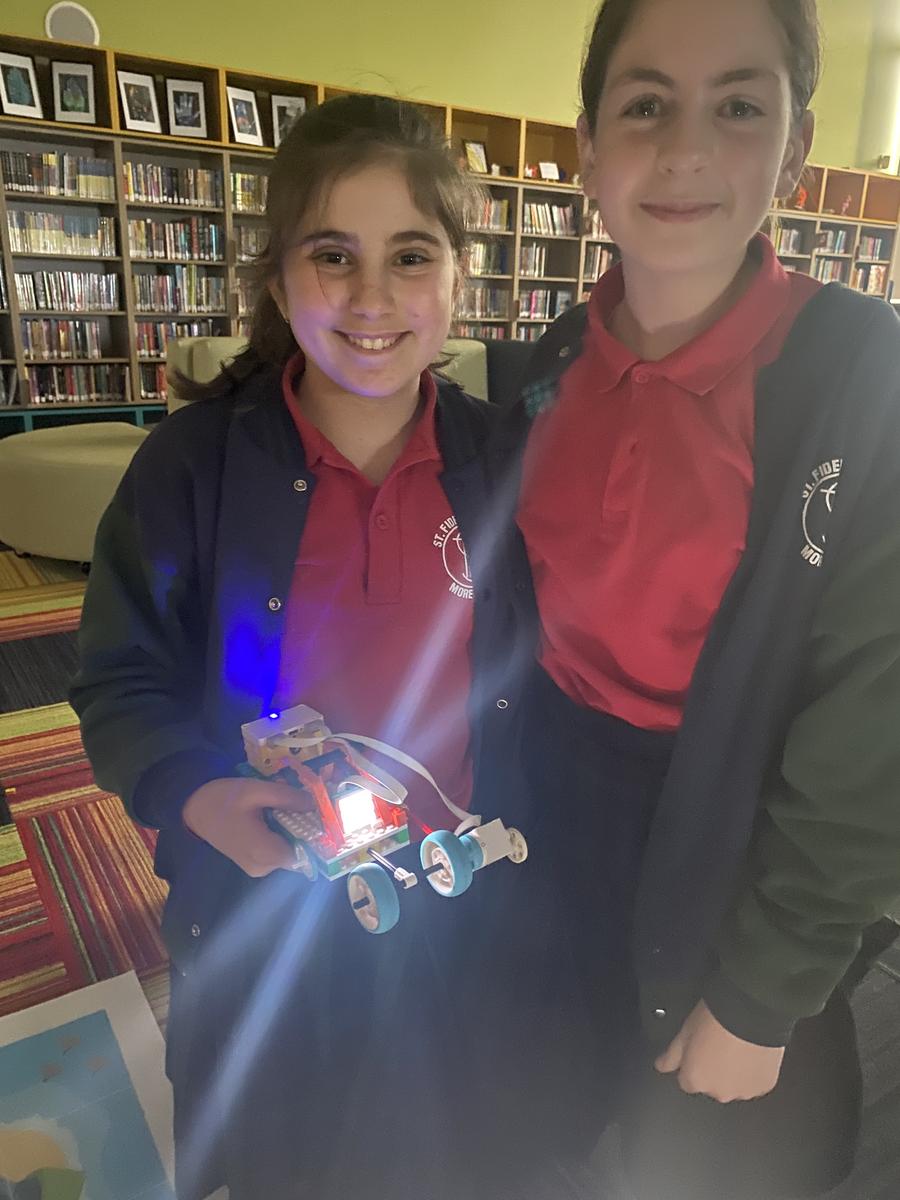
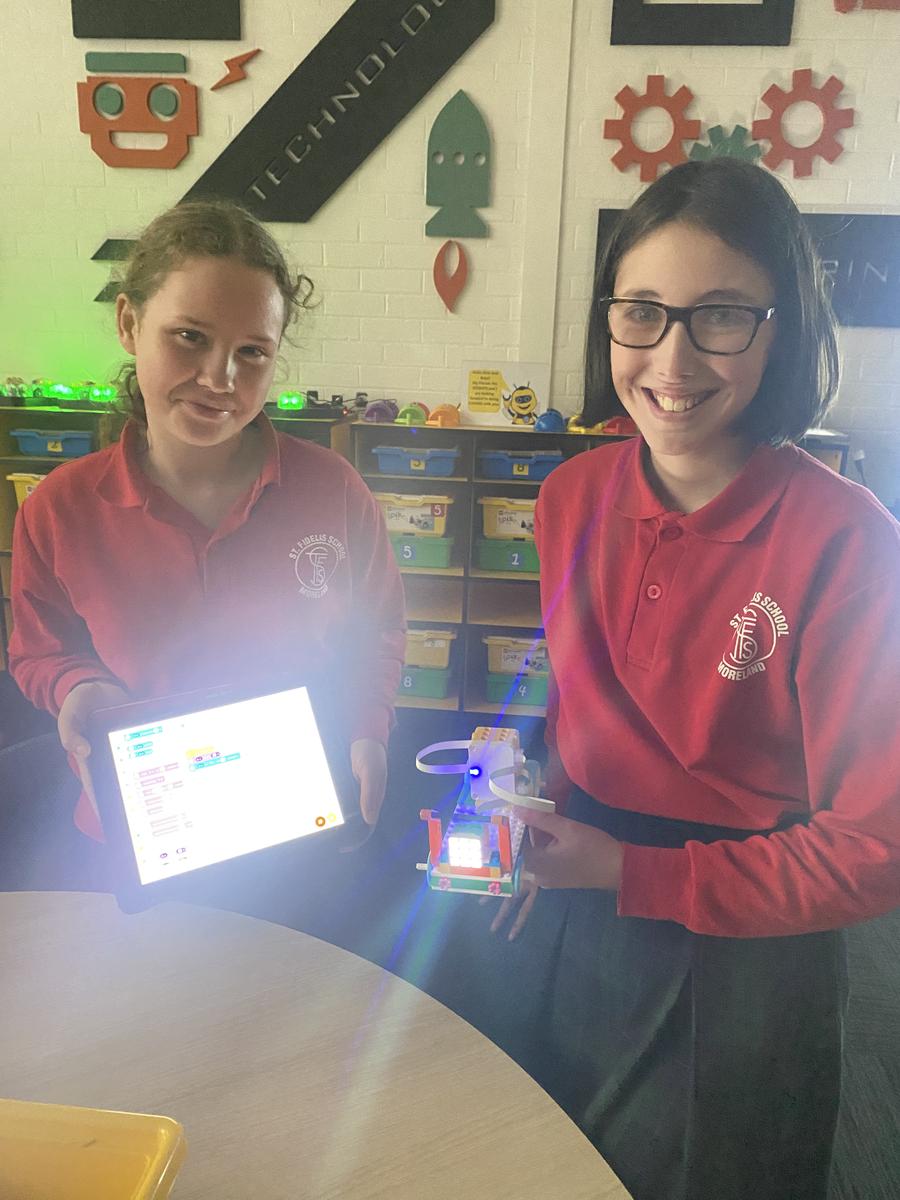
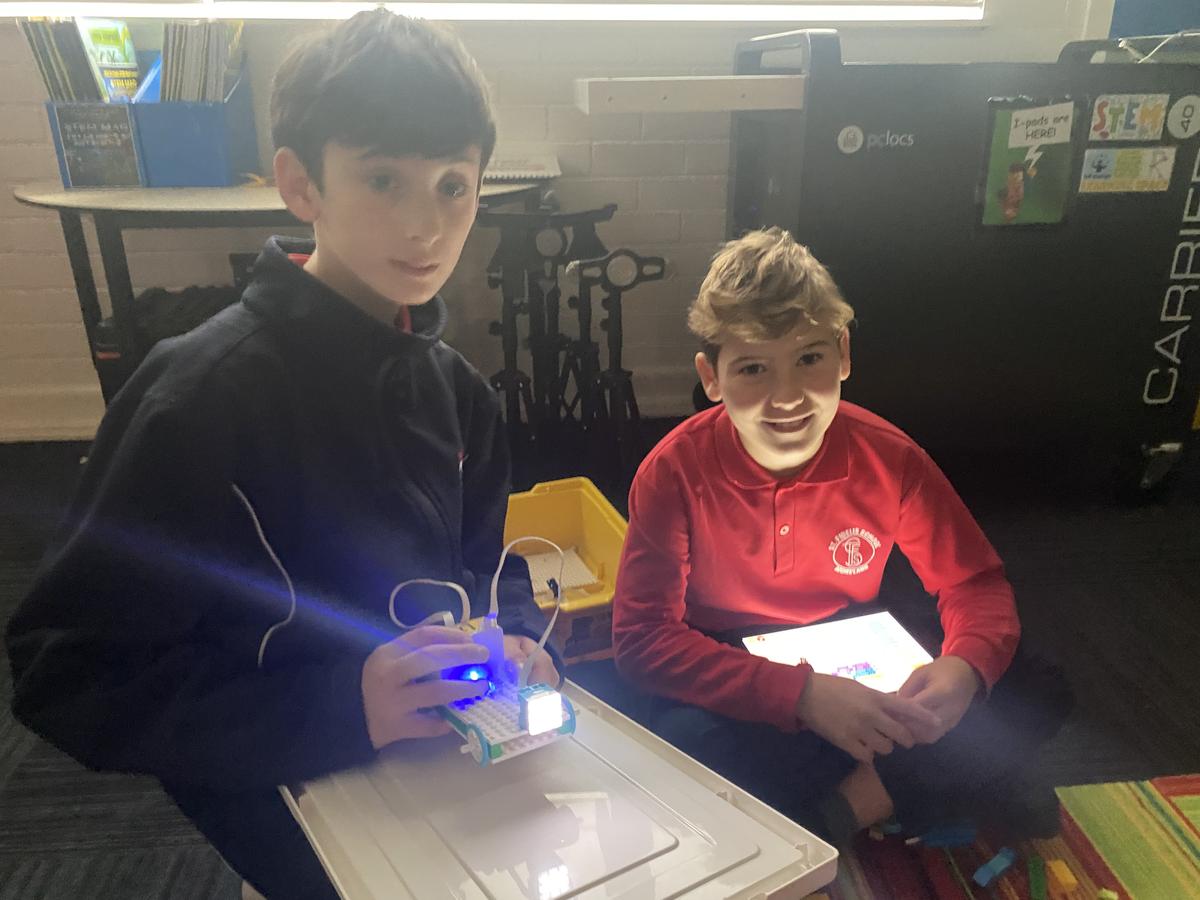
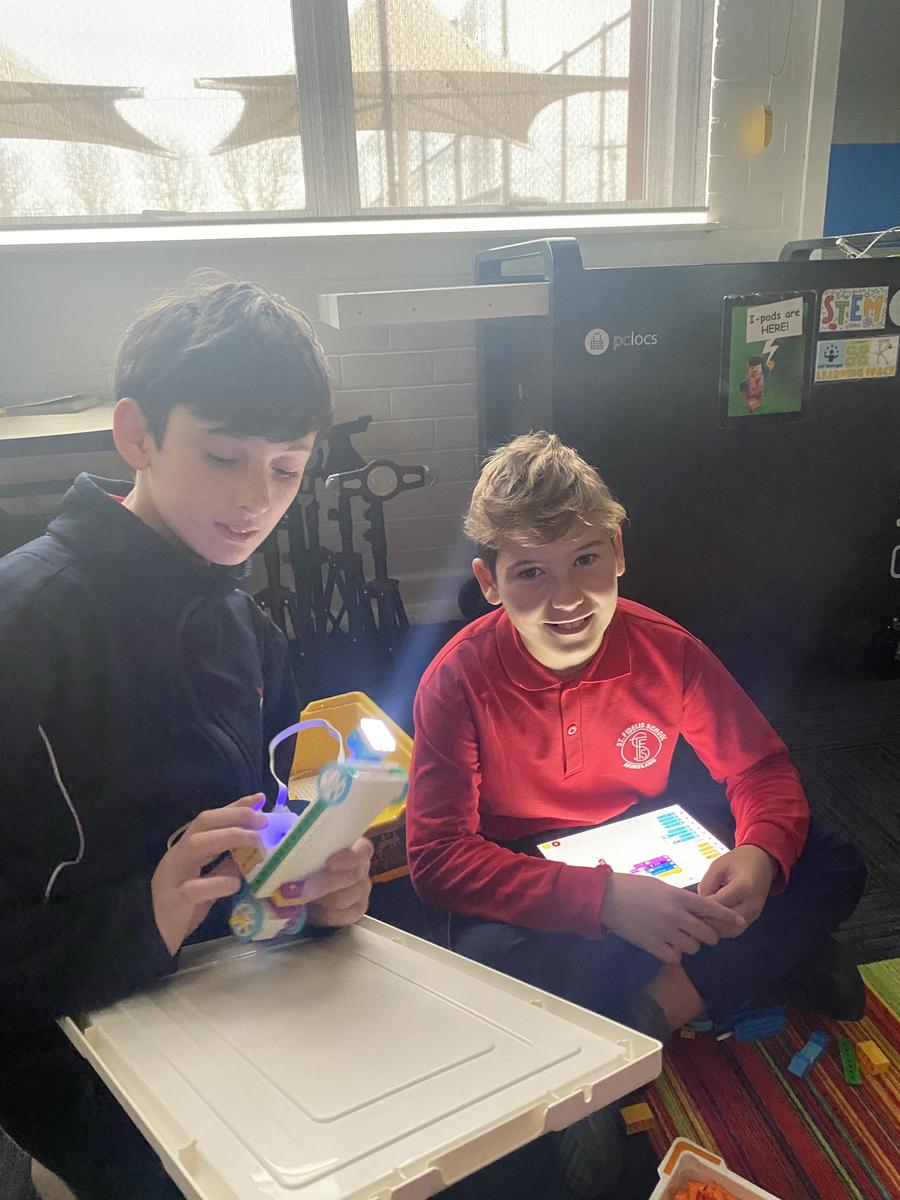
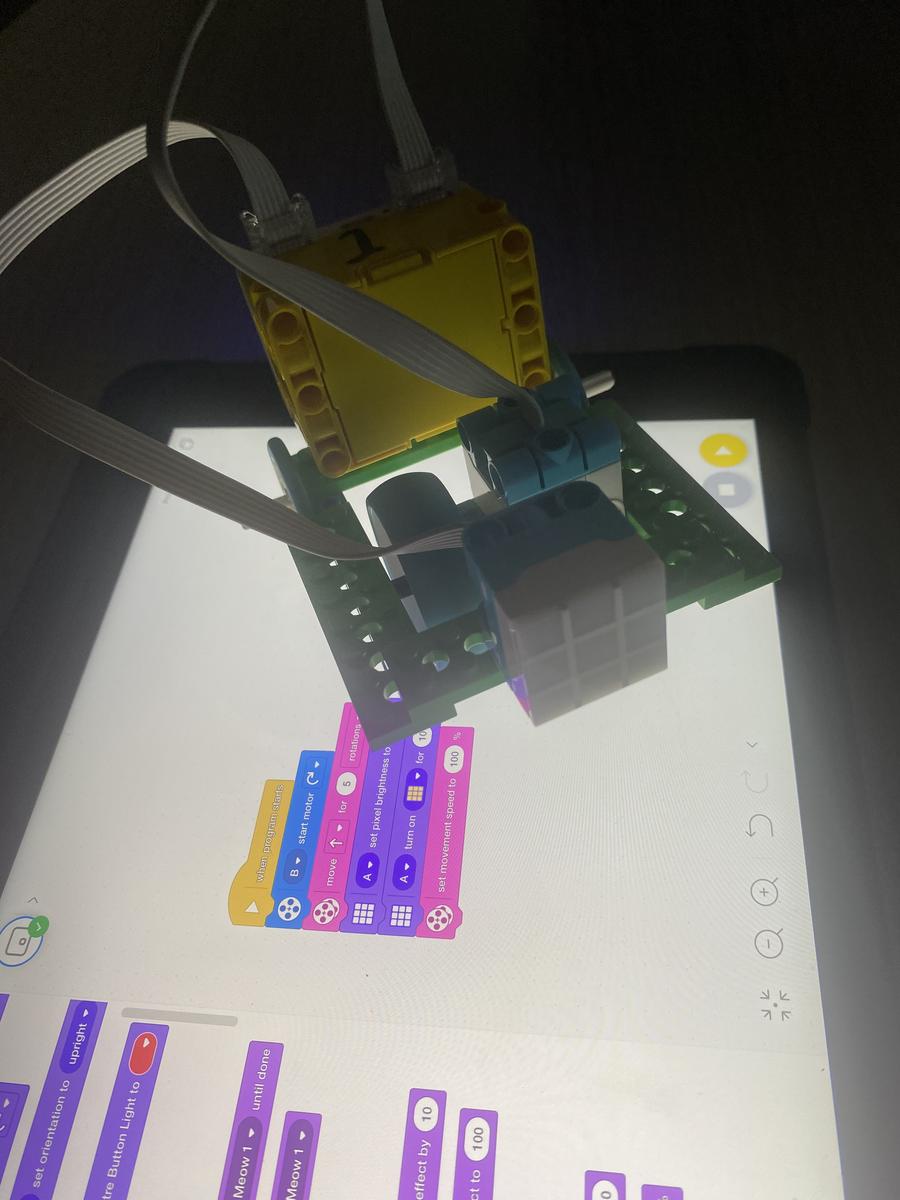

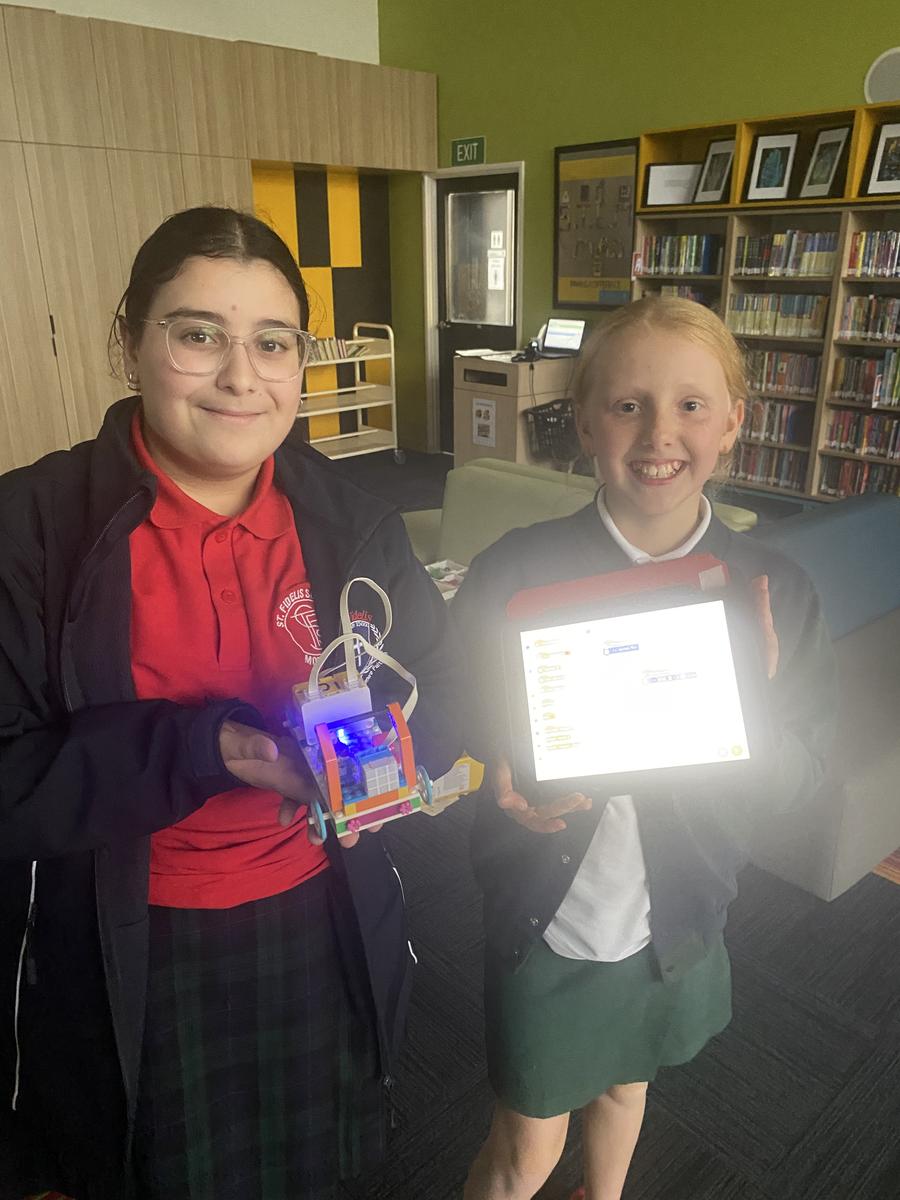
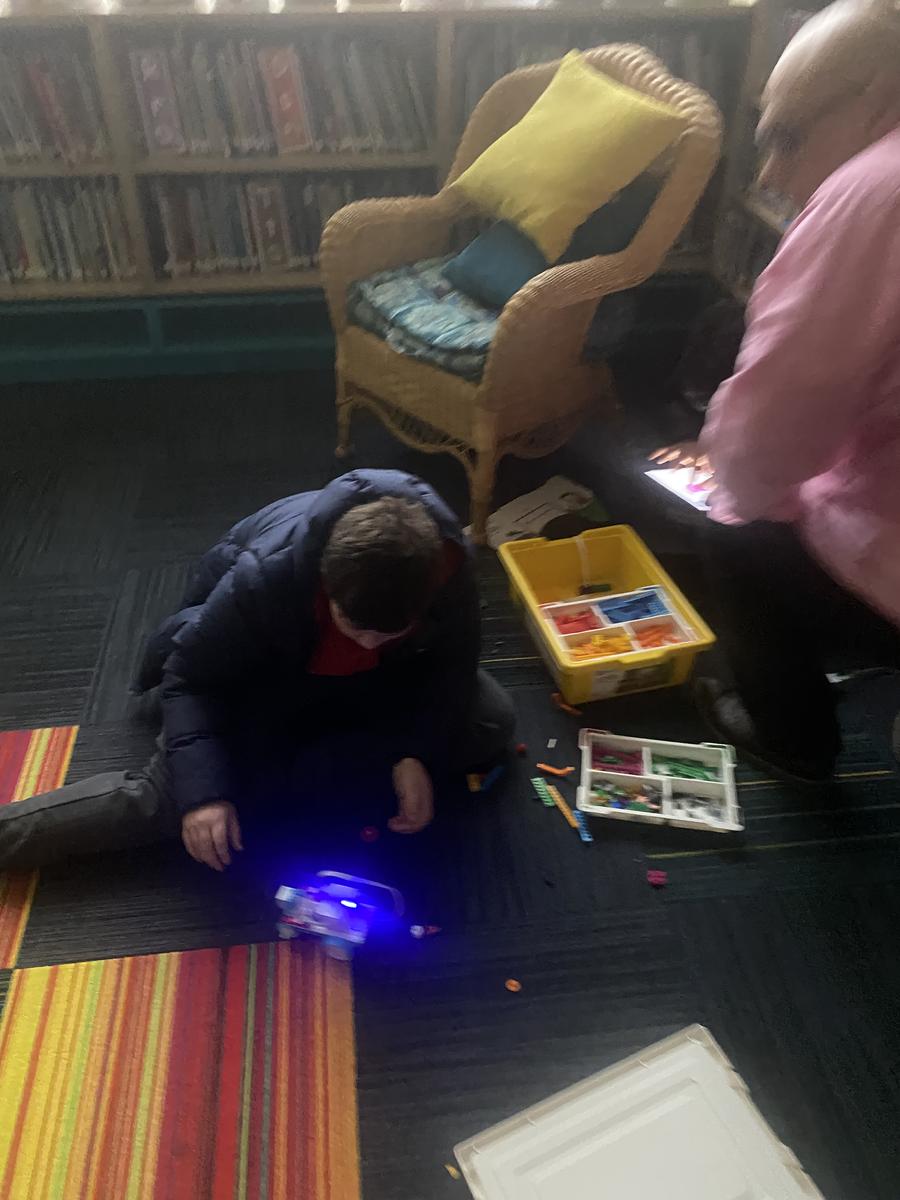
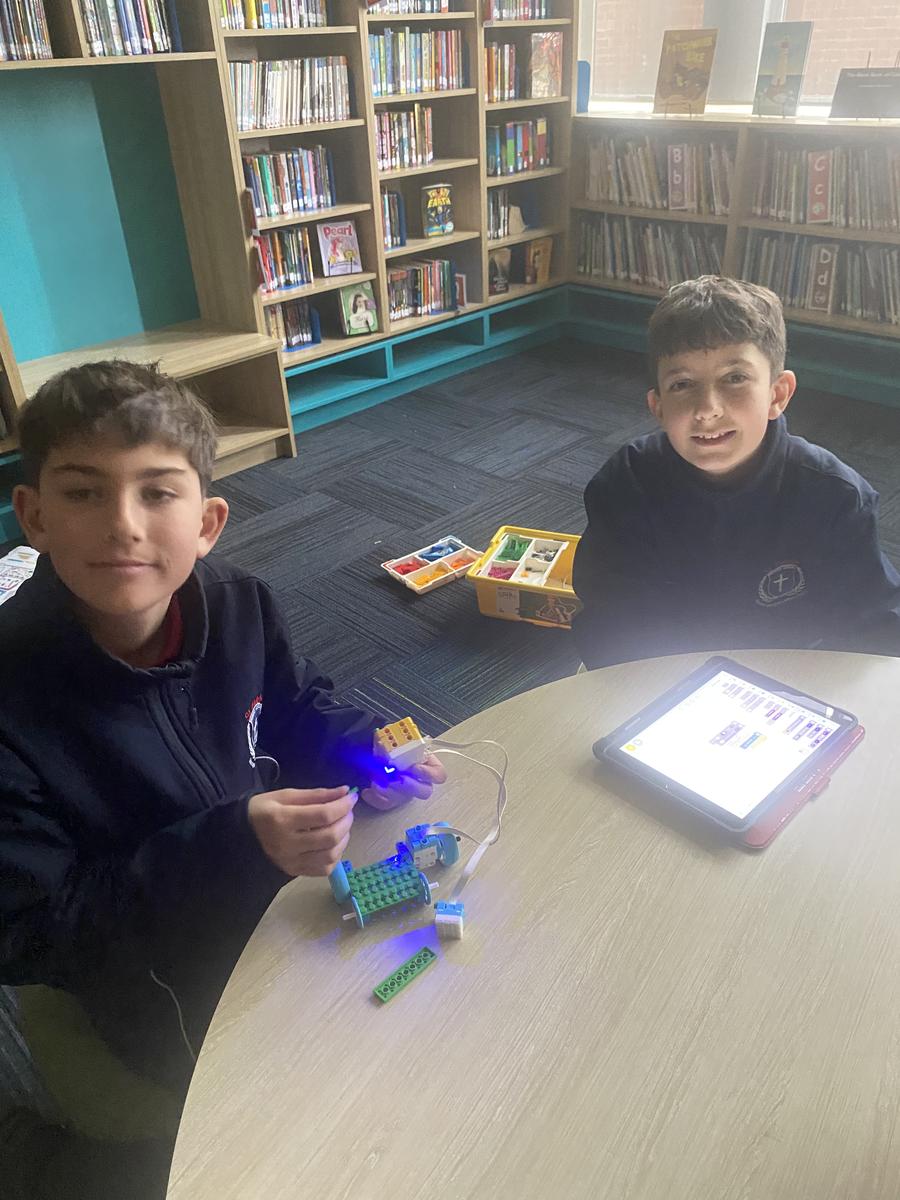

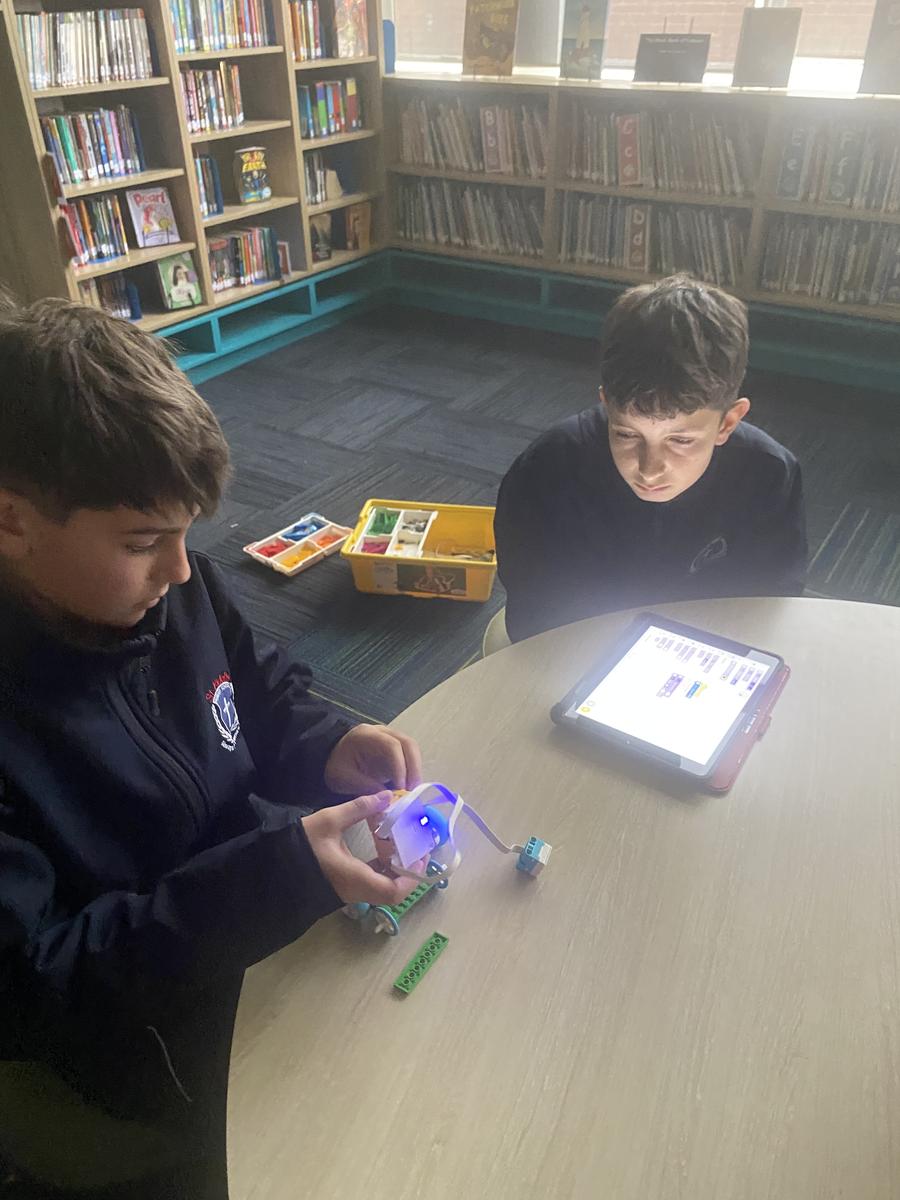
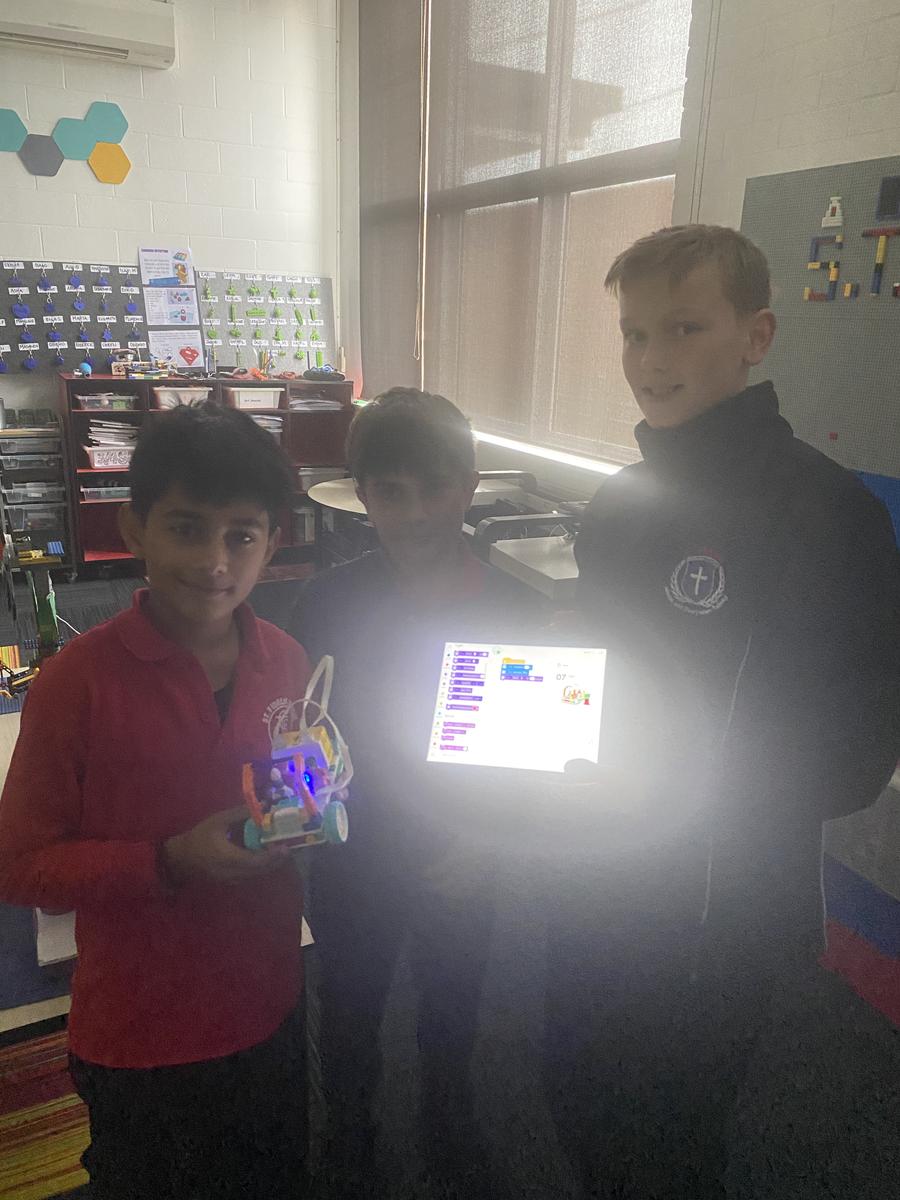
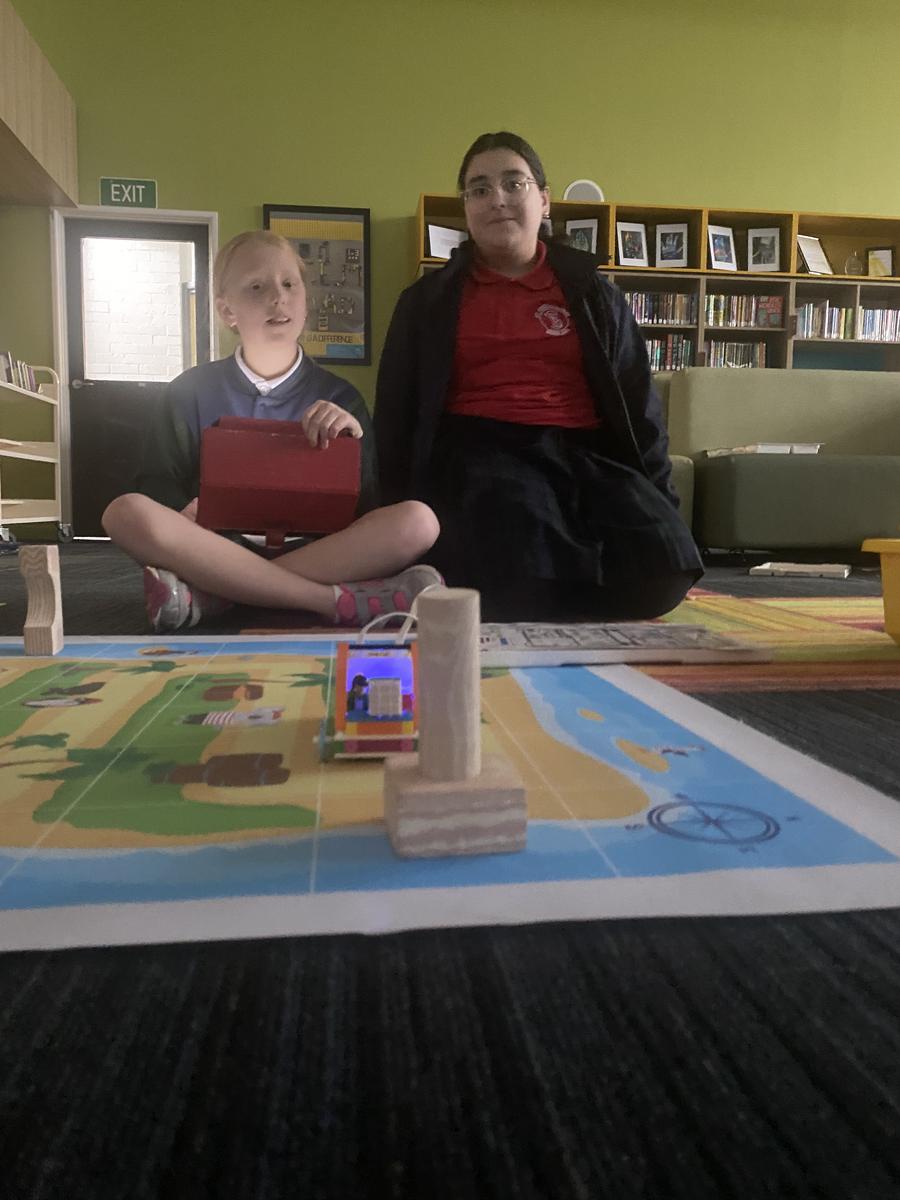
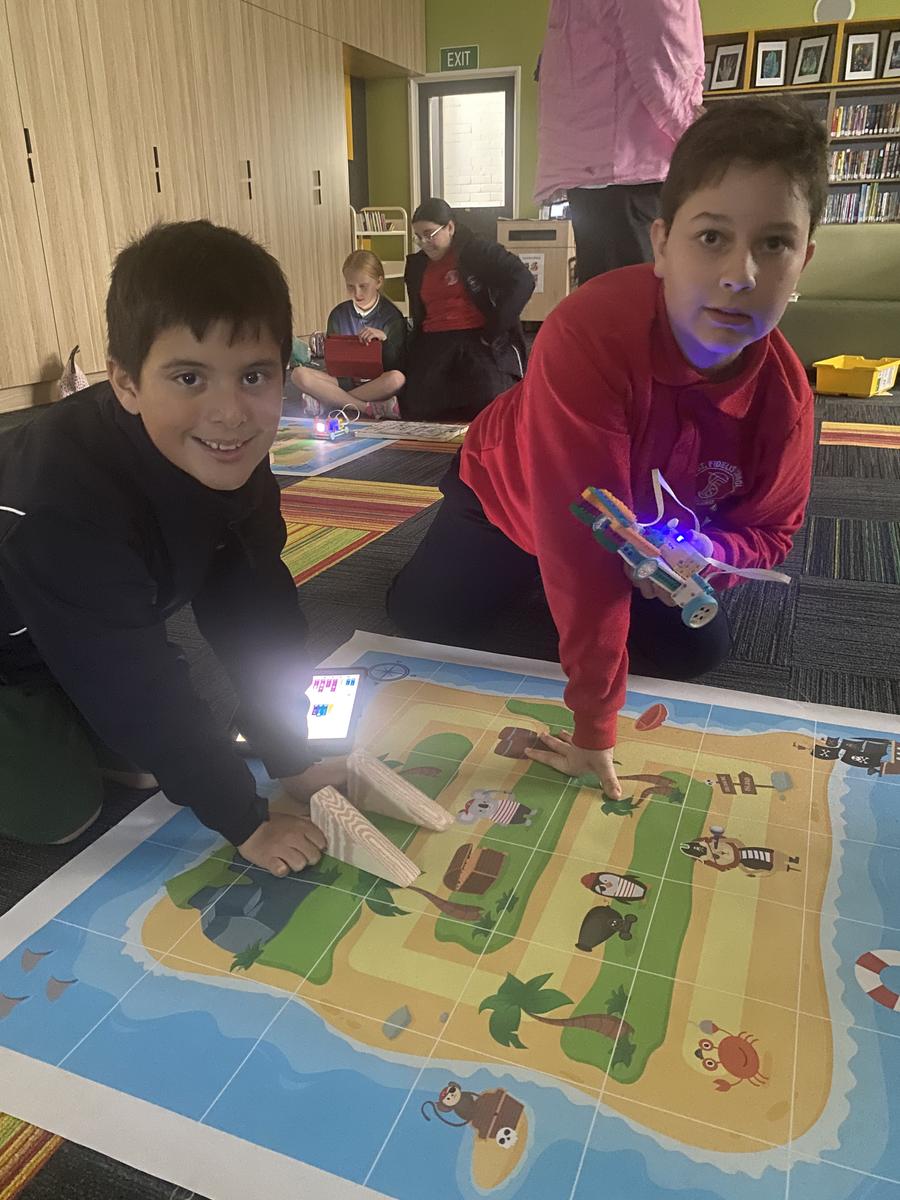
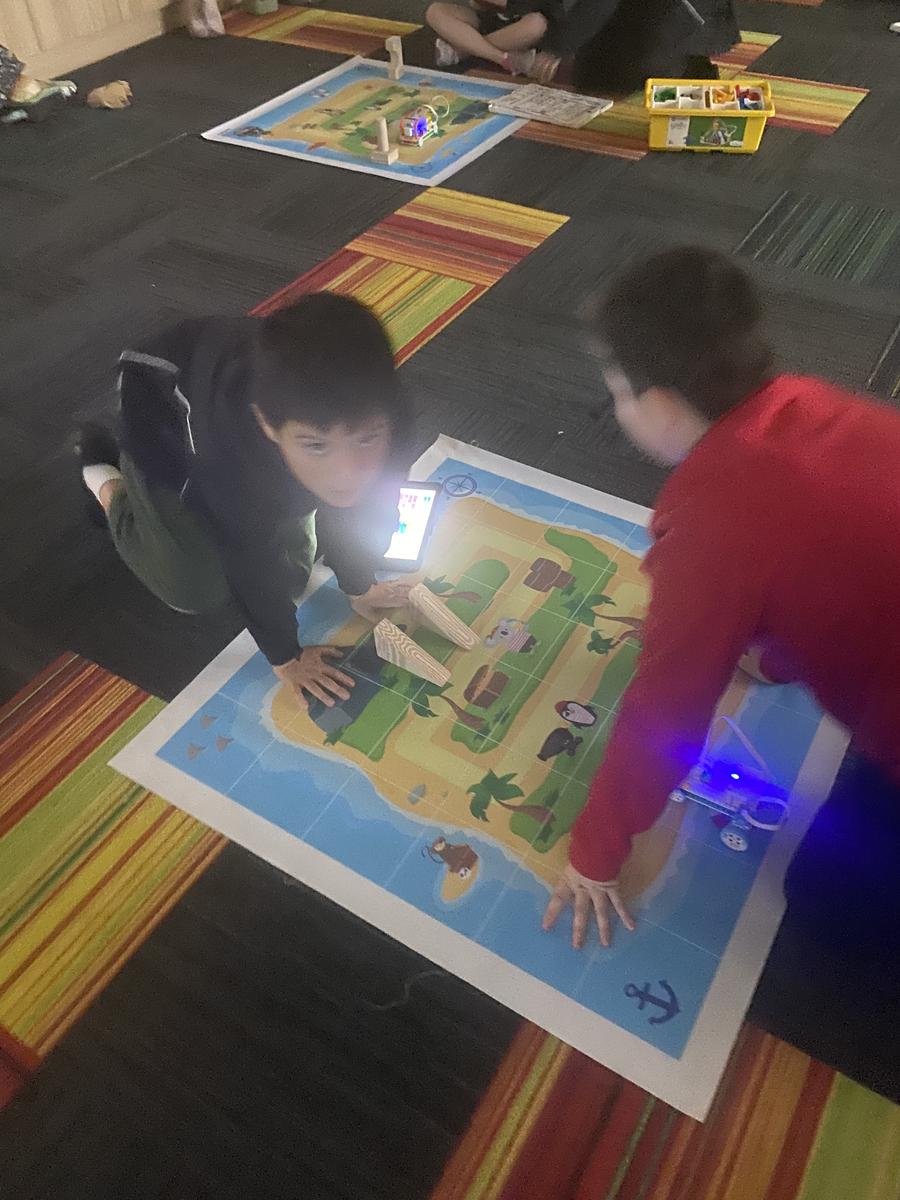

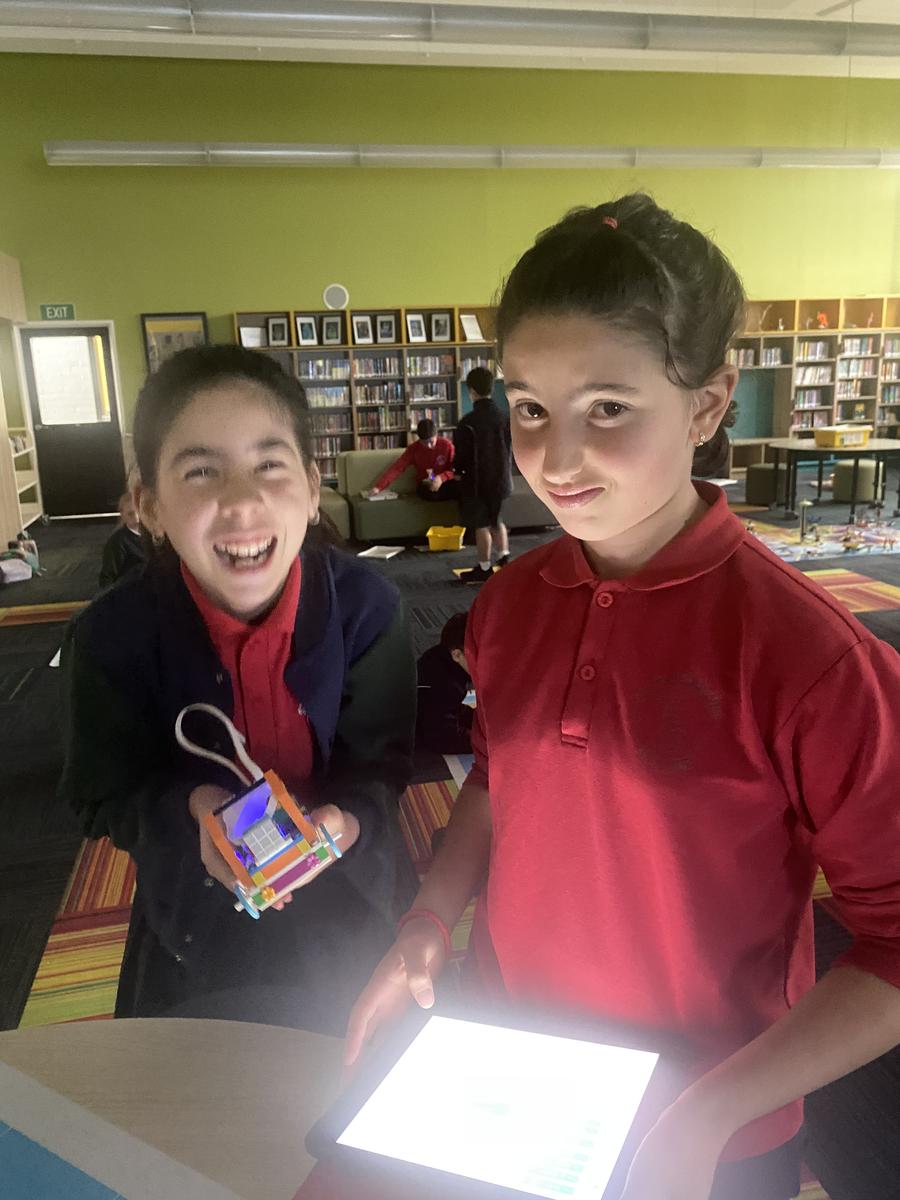

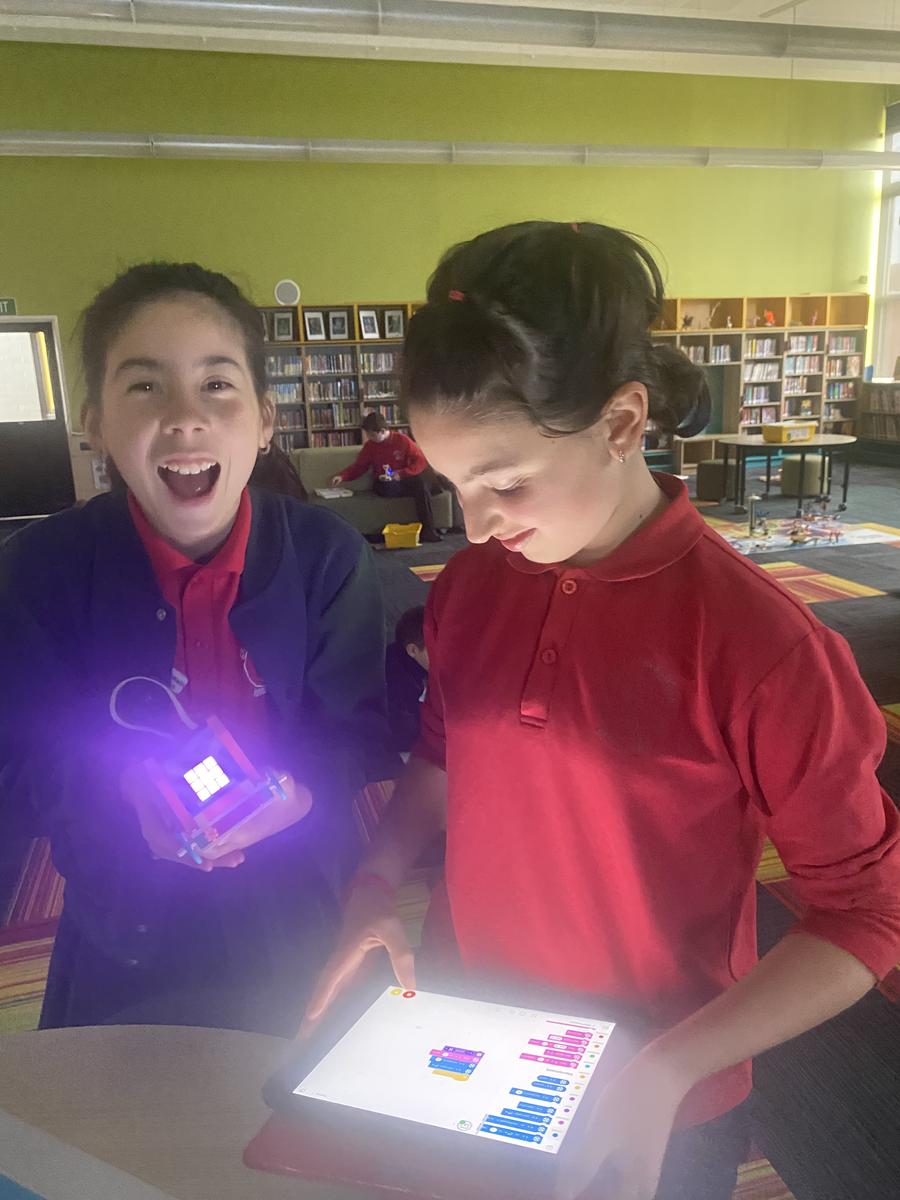
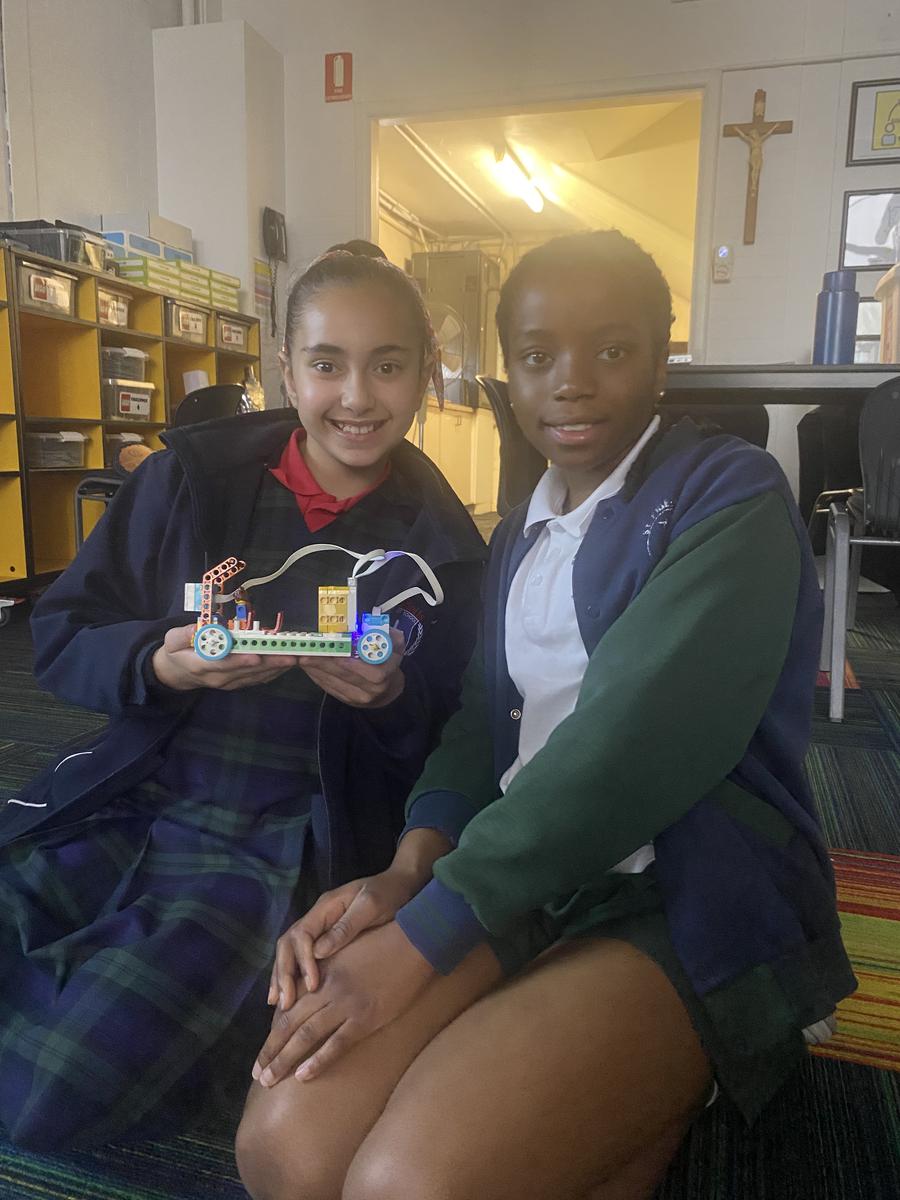
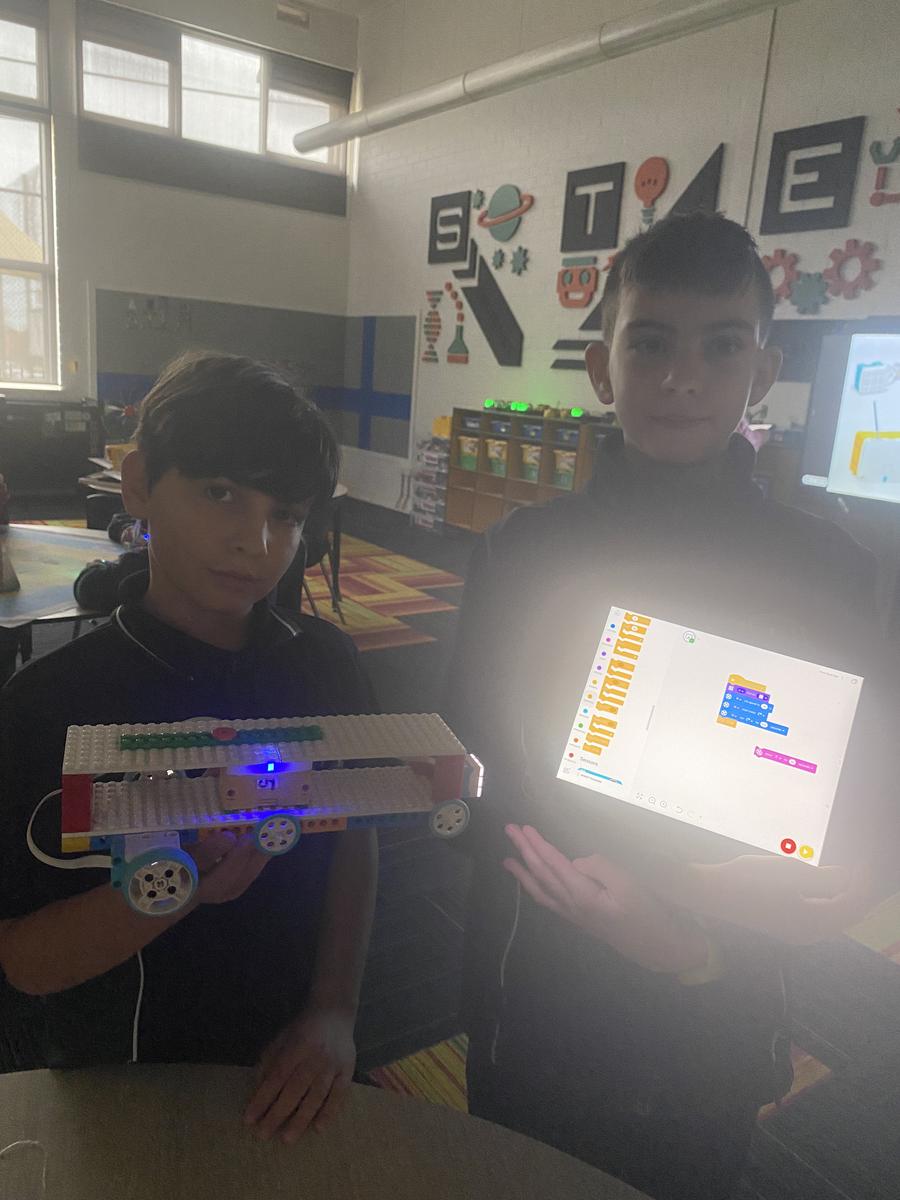
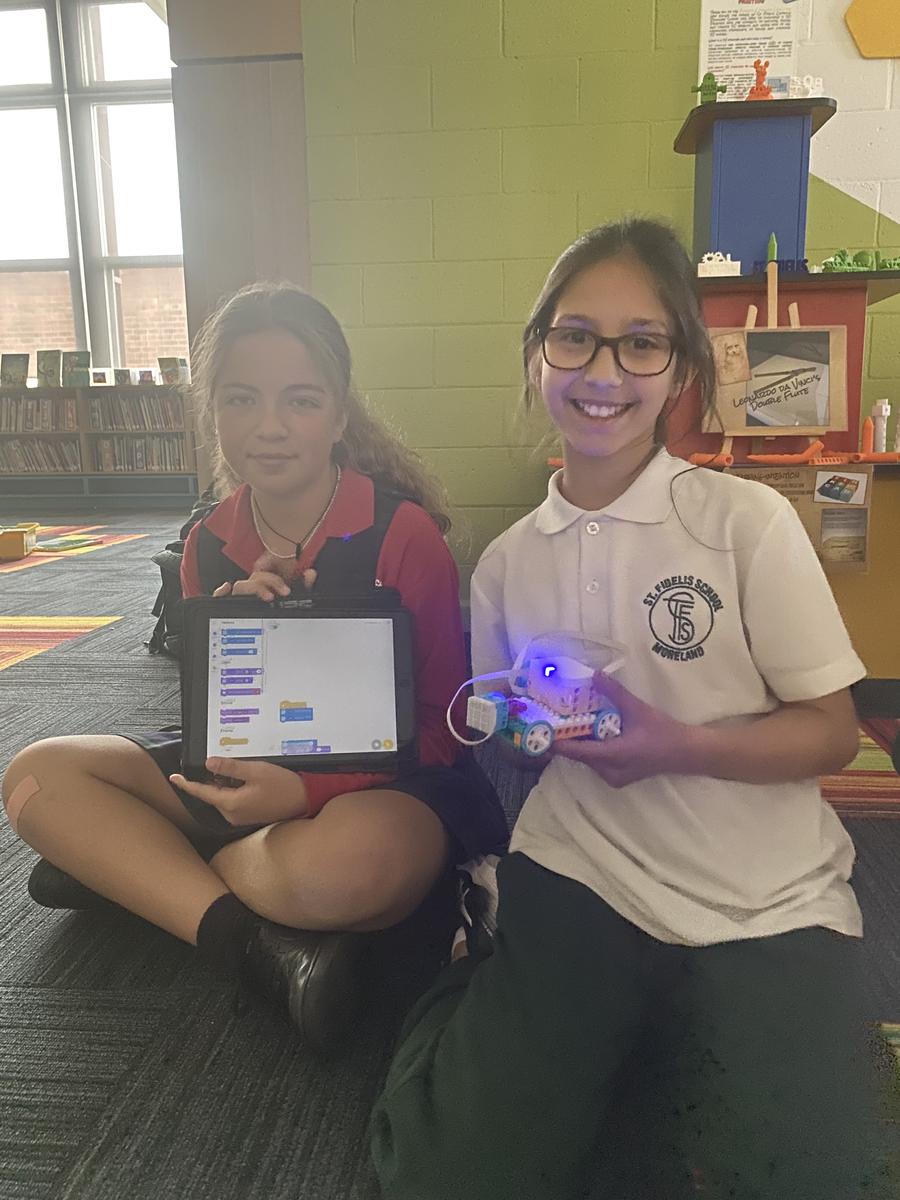
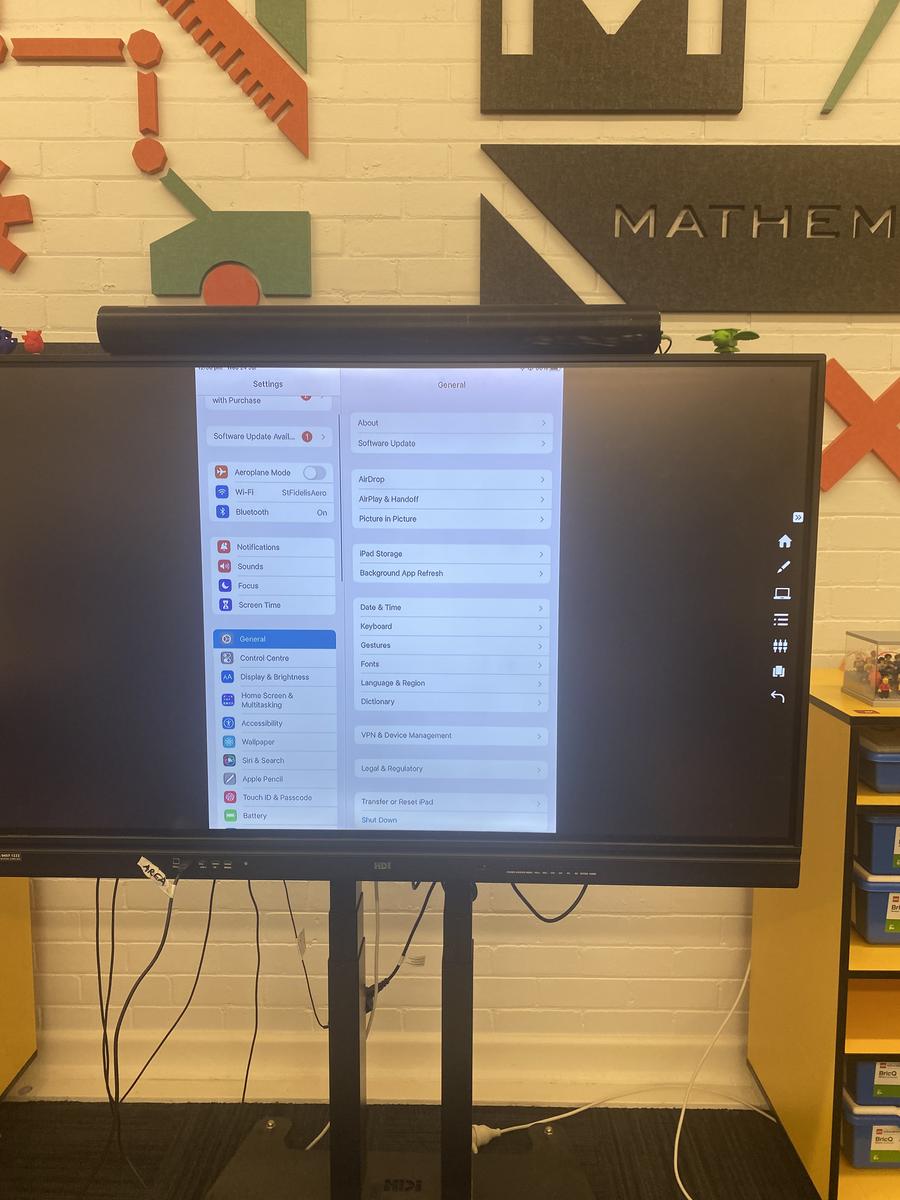
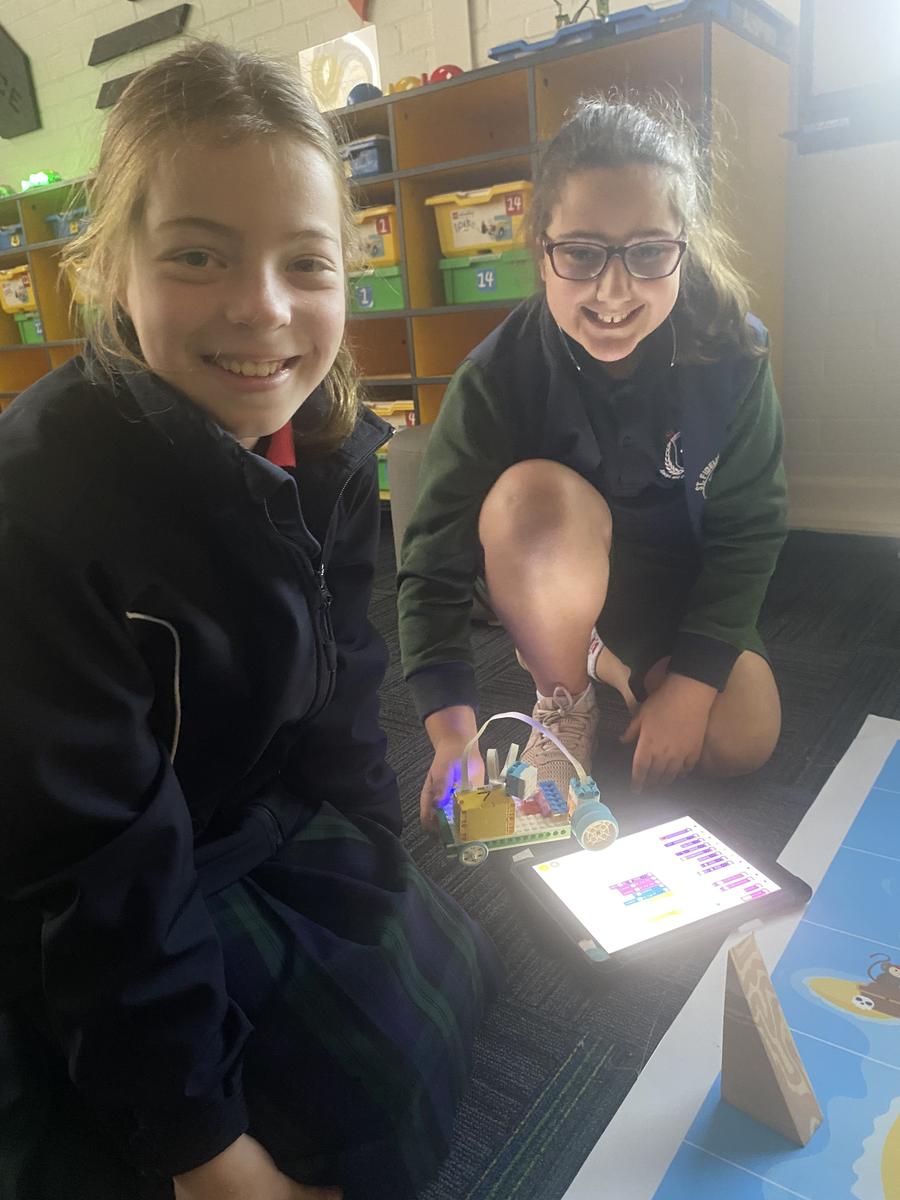
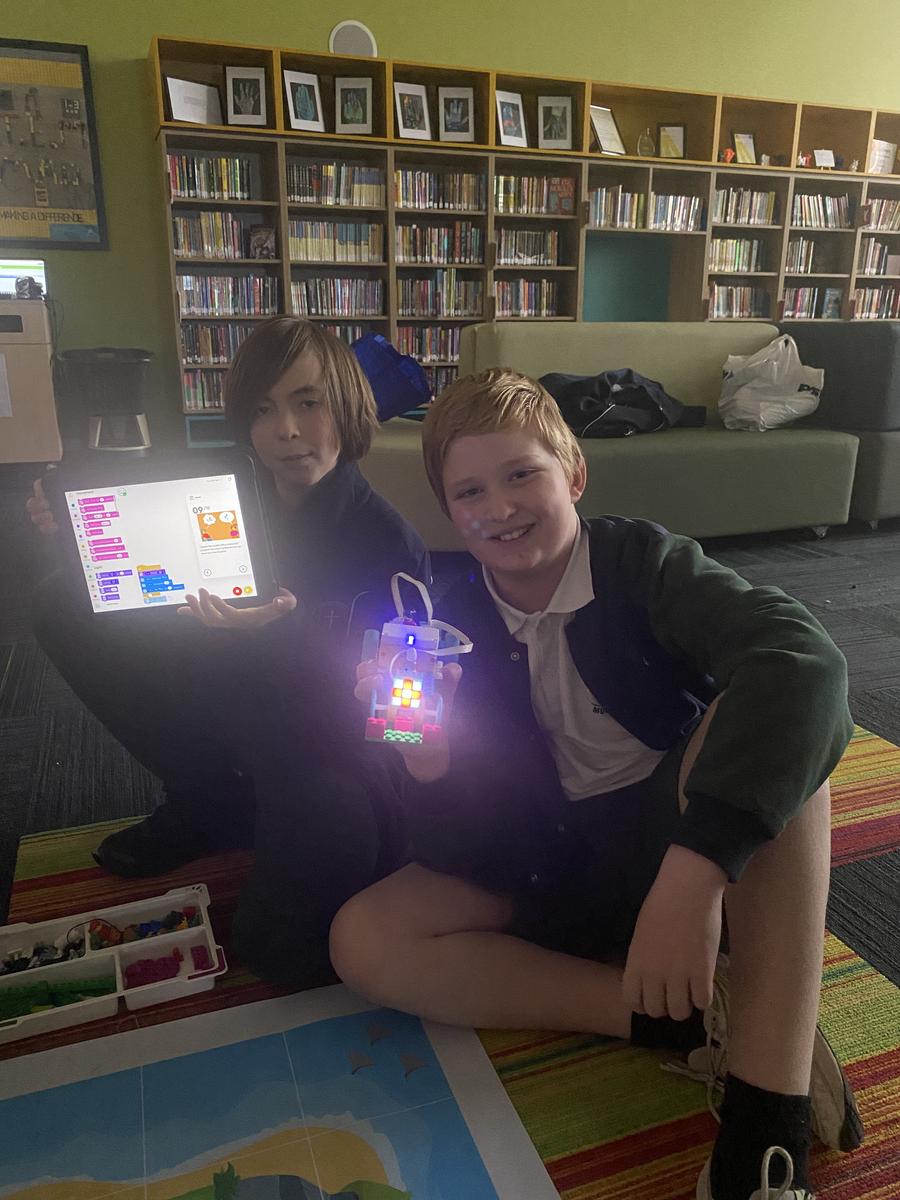
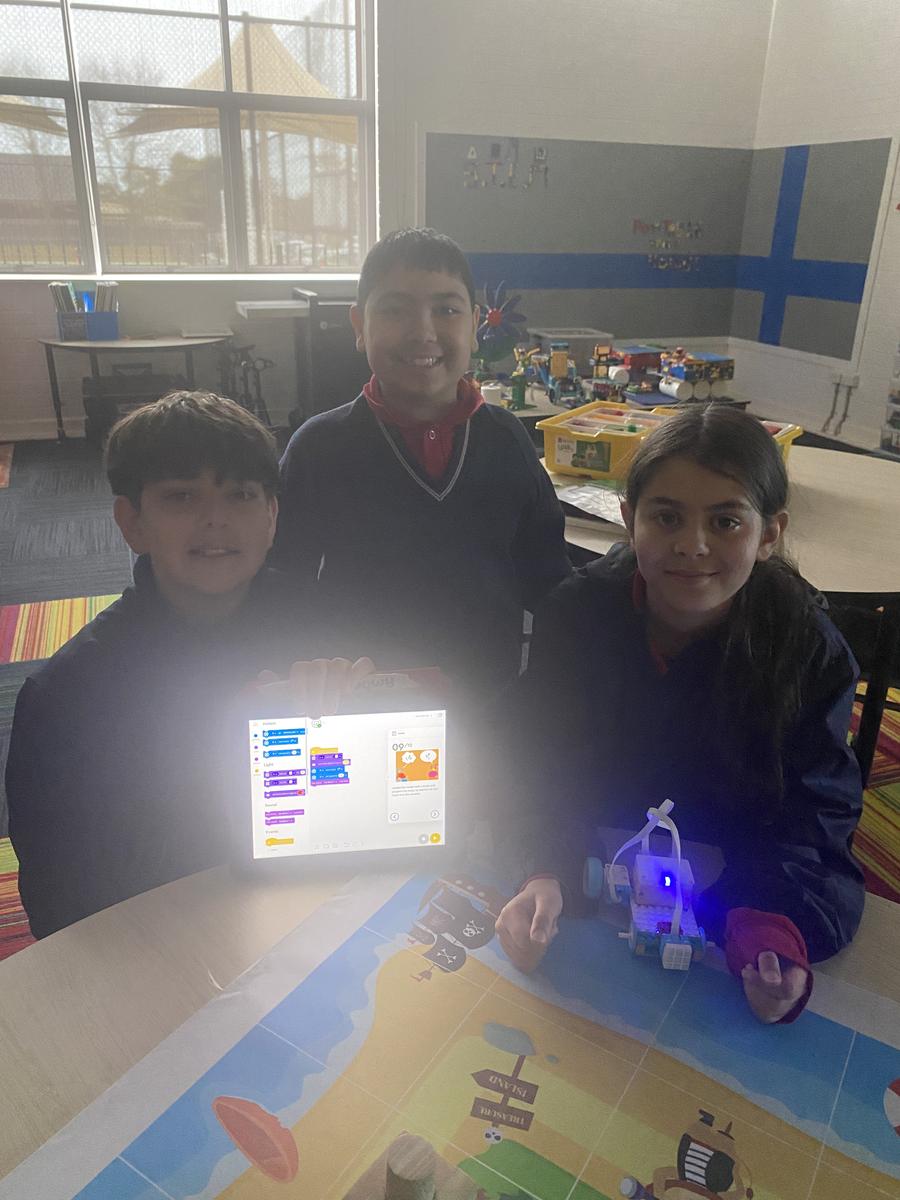
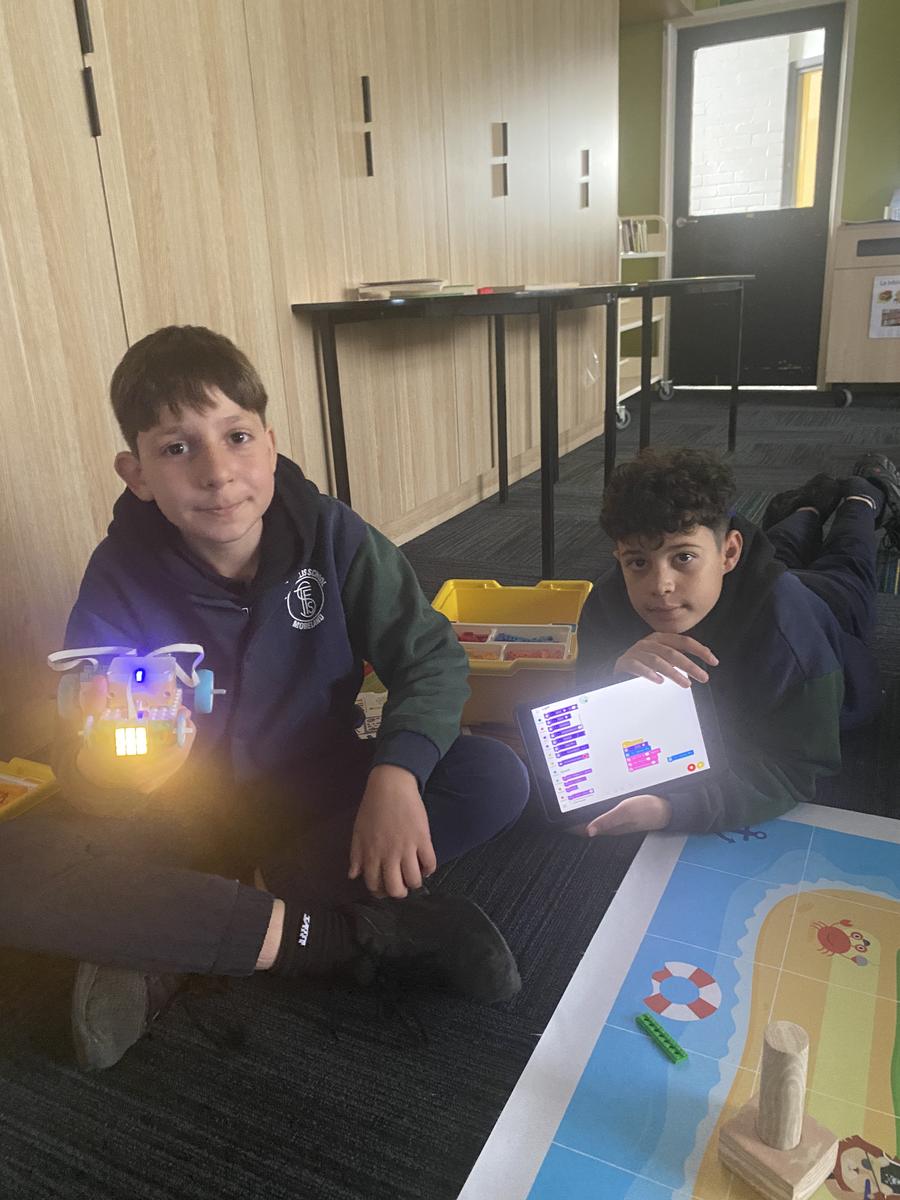
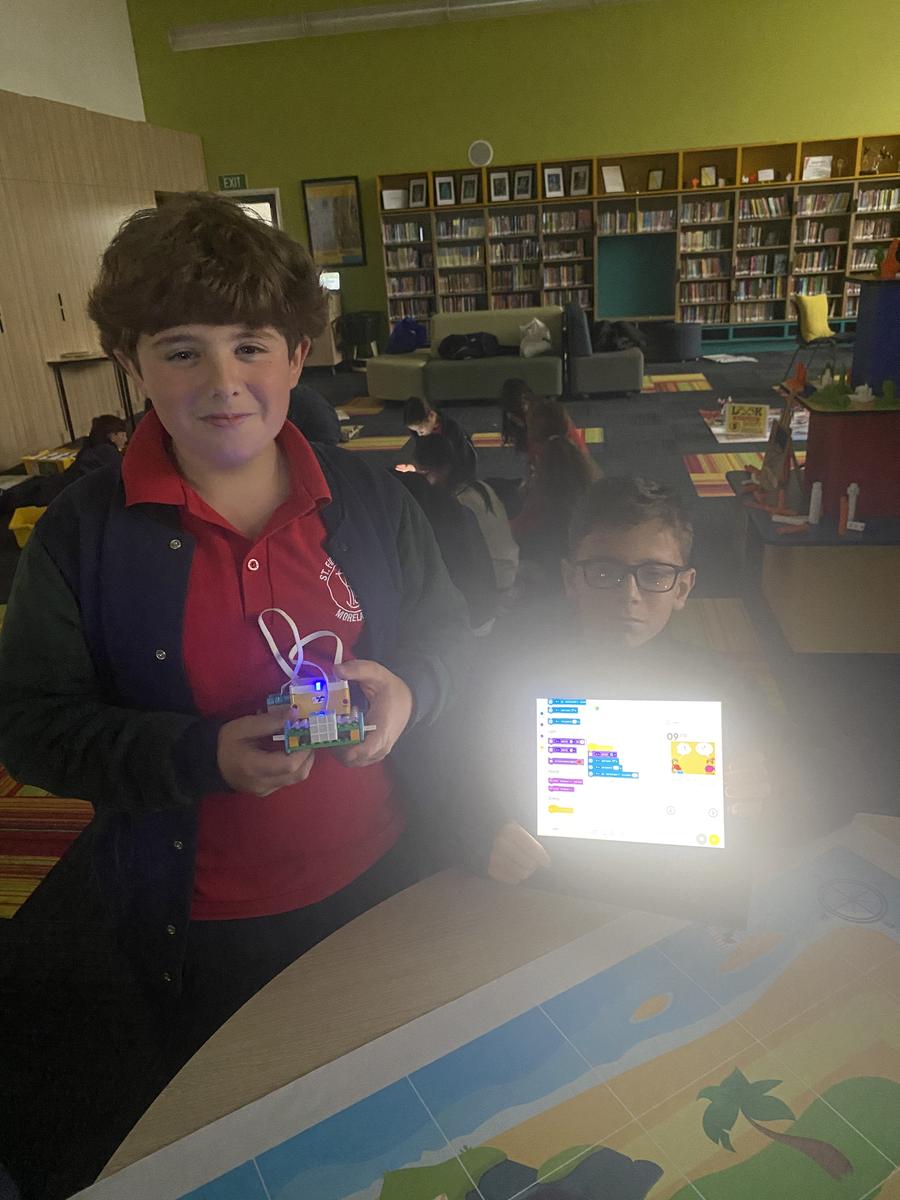



































Year 5/6MC Students Explore Leonardo da Vinci's Inventions
Last term and last two weeks, the creative minds of Year 5/6MC have delved into the genius of Leonardo da Vinci, focusing on his remarkable inventions.
Embracing da Vinci's spirit of innovation, students embarked on hands-on projects, recreating some of his most visionary designs using cardboard, wood, and various other materials. Our young inventors took on the challenge of constructing models of da Vinci's tank, bike, plane, and even his ideal city. Through this engaging project, they not only learned about the principles of engineering and design but also honed their problem-solving skills and creativity.
These projects have been a fantastic opportunity for students to connect with history and understand the impact of da Vinci's work on modern technology. We're incredibly proud of their dedication and ingenuity in bringing these inventions to life.
We invite all parents and guardians to come and view these incredible creations in our upcoming exhibition in Term 4. It's a chance to celebrate the hard work and imagination of our students. Don't miss it! Here are some photos of the Year 5/6MC’s models.
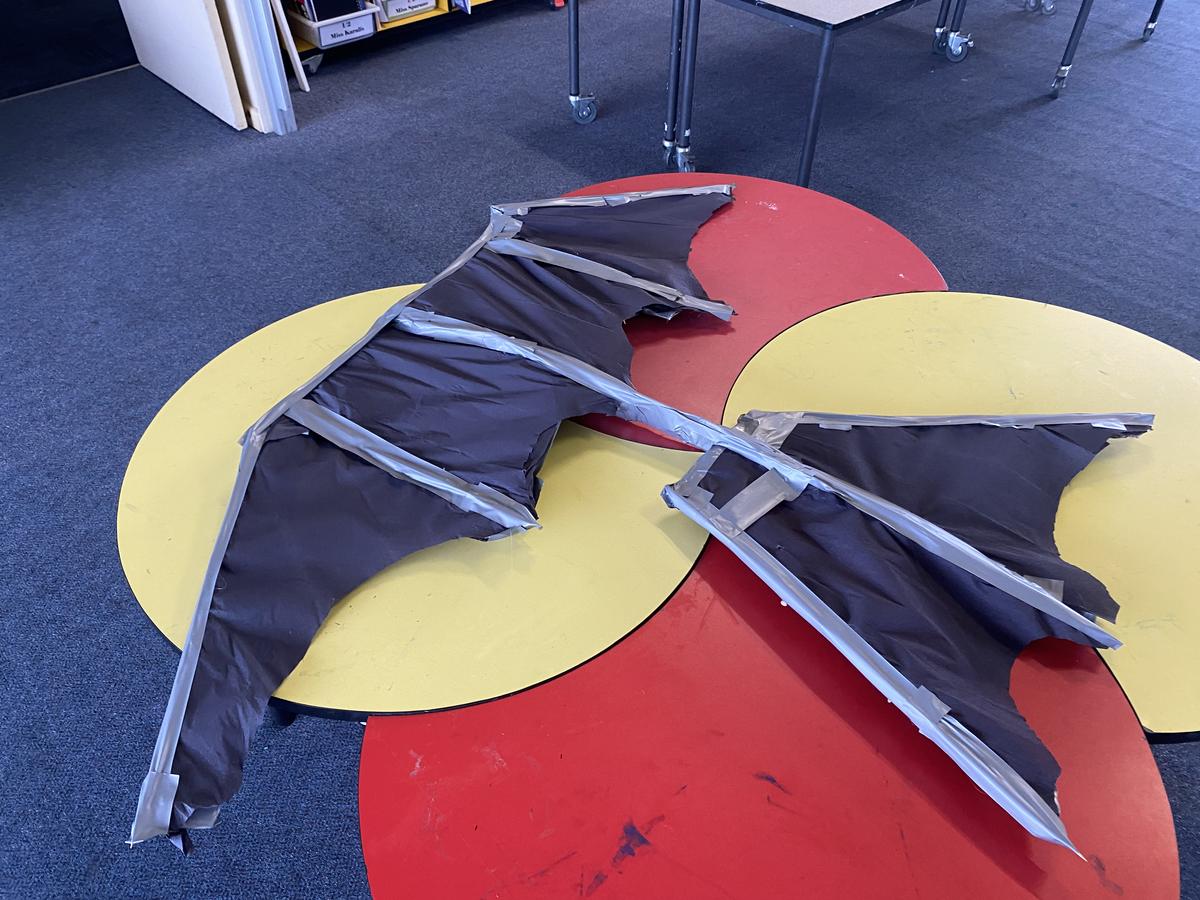

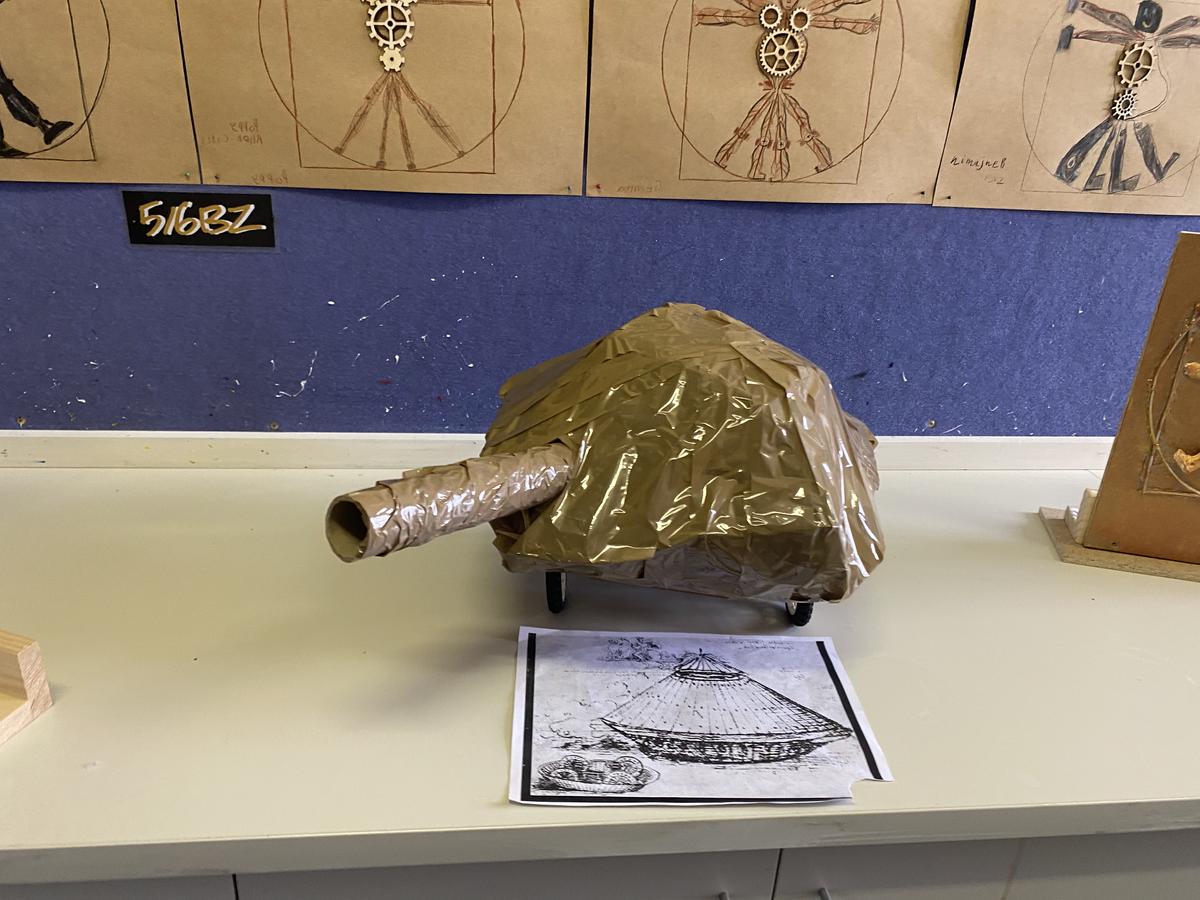
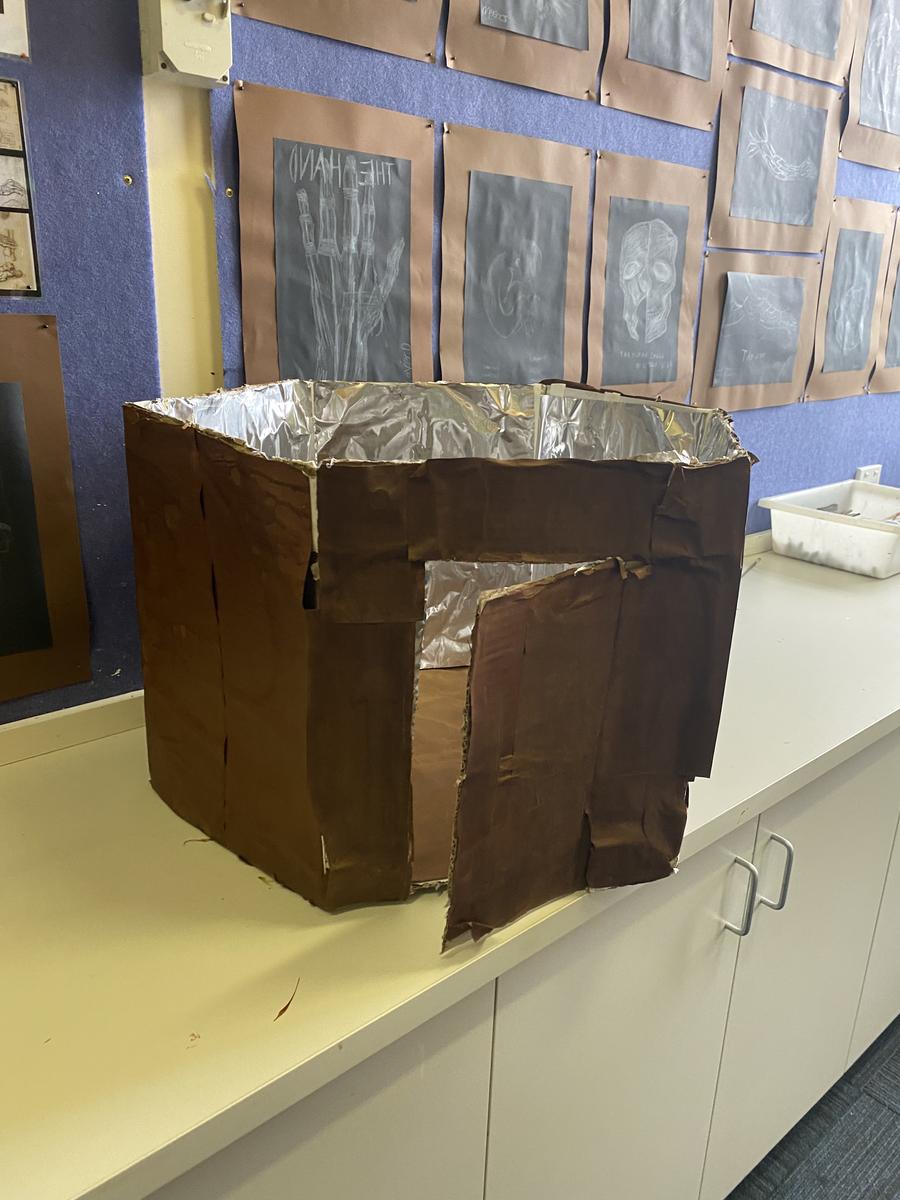
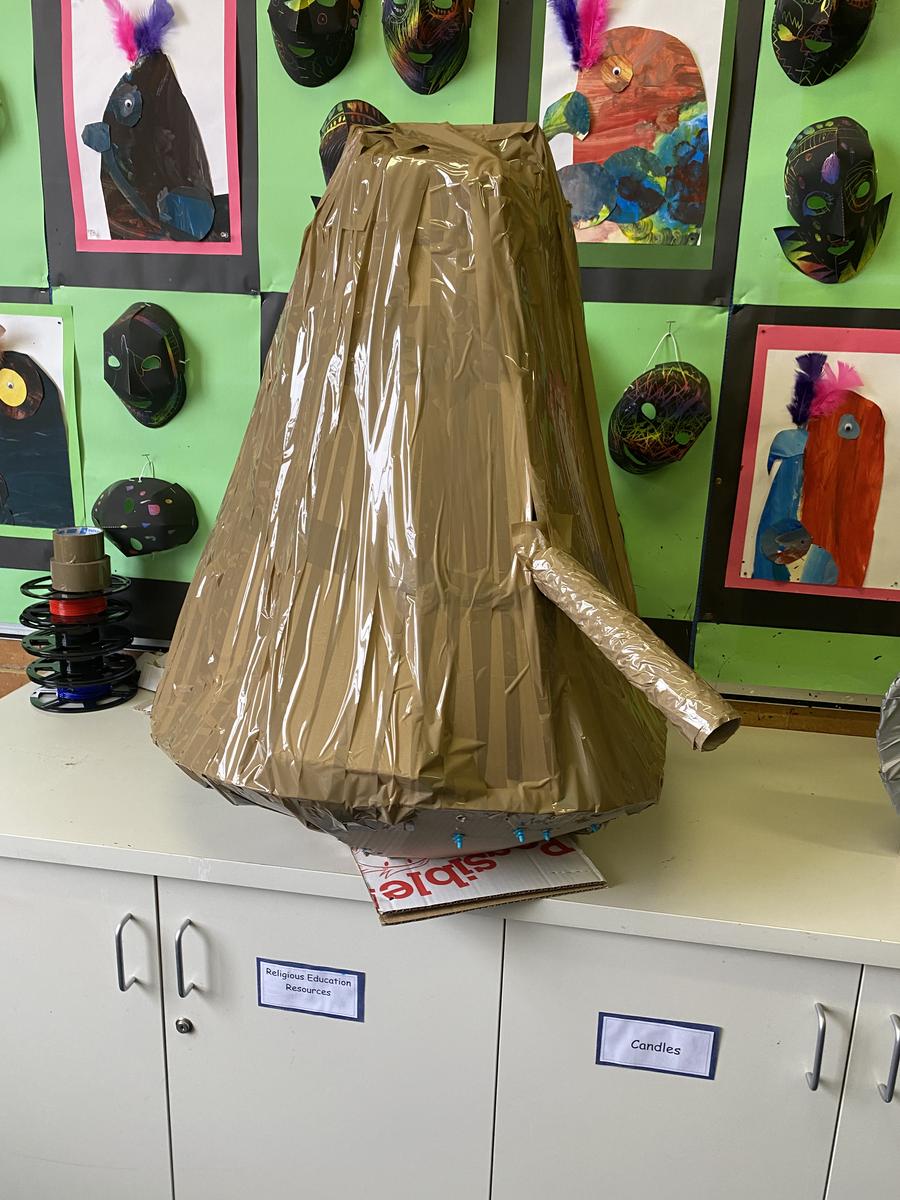
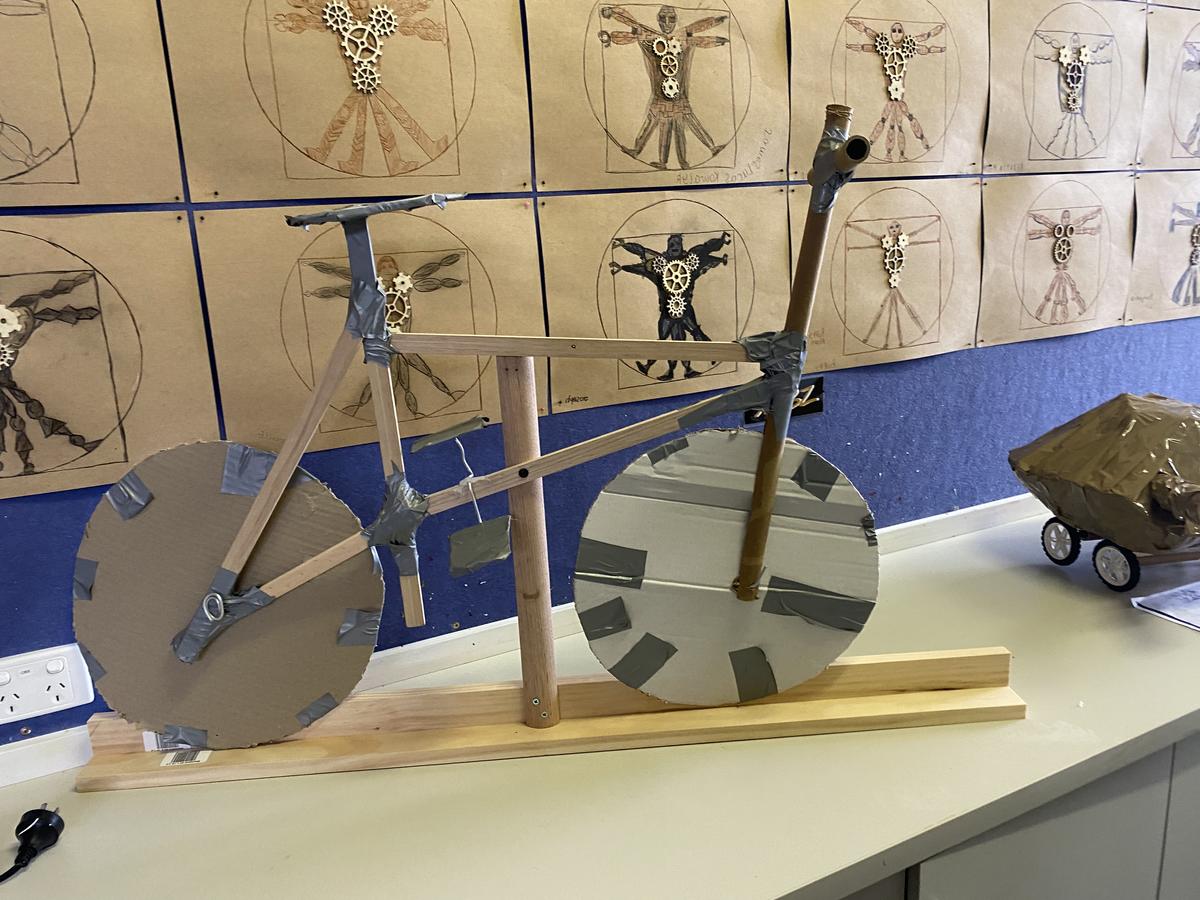
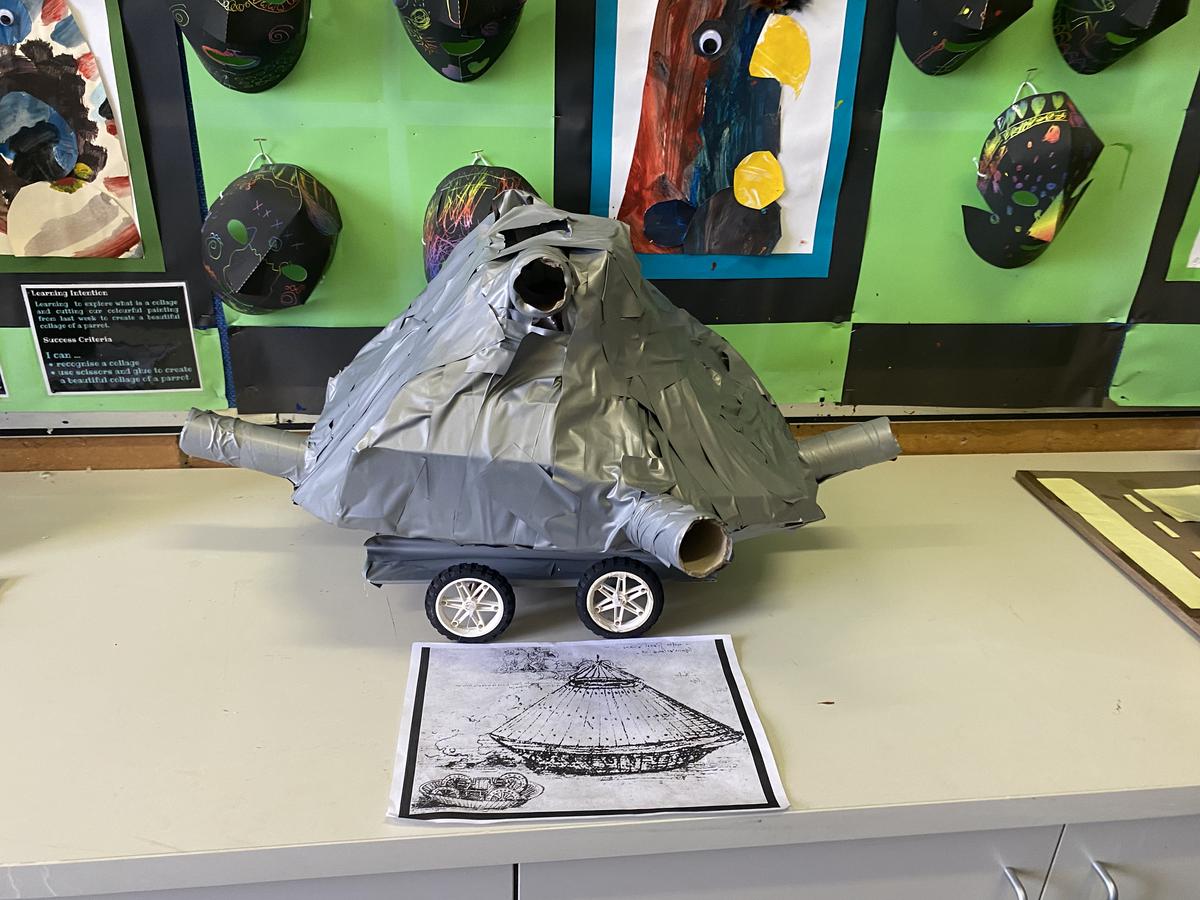
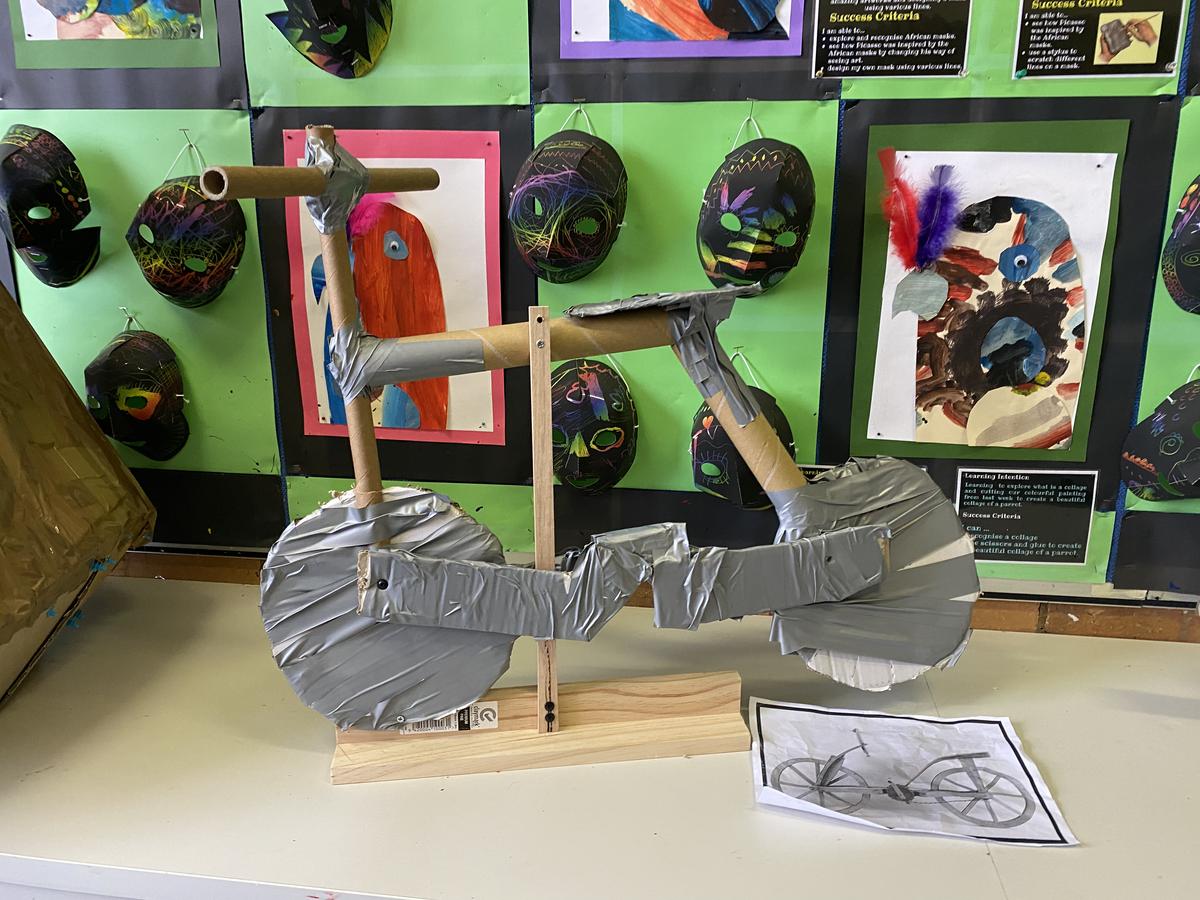
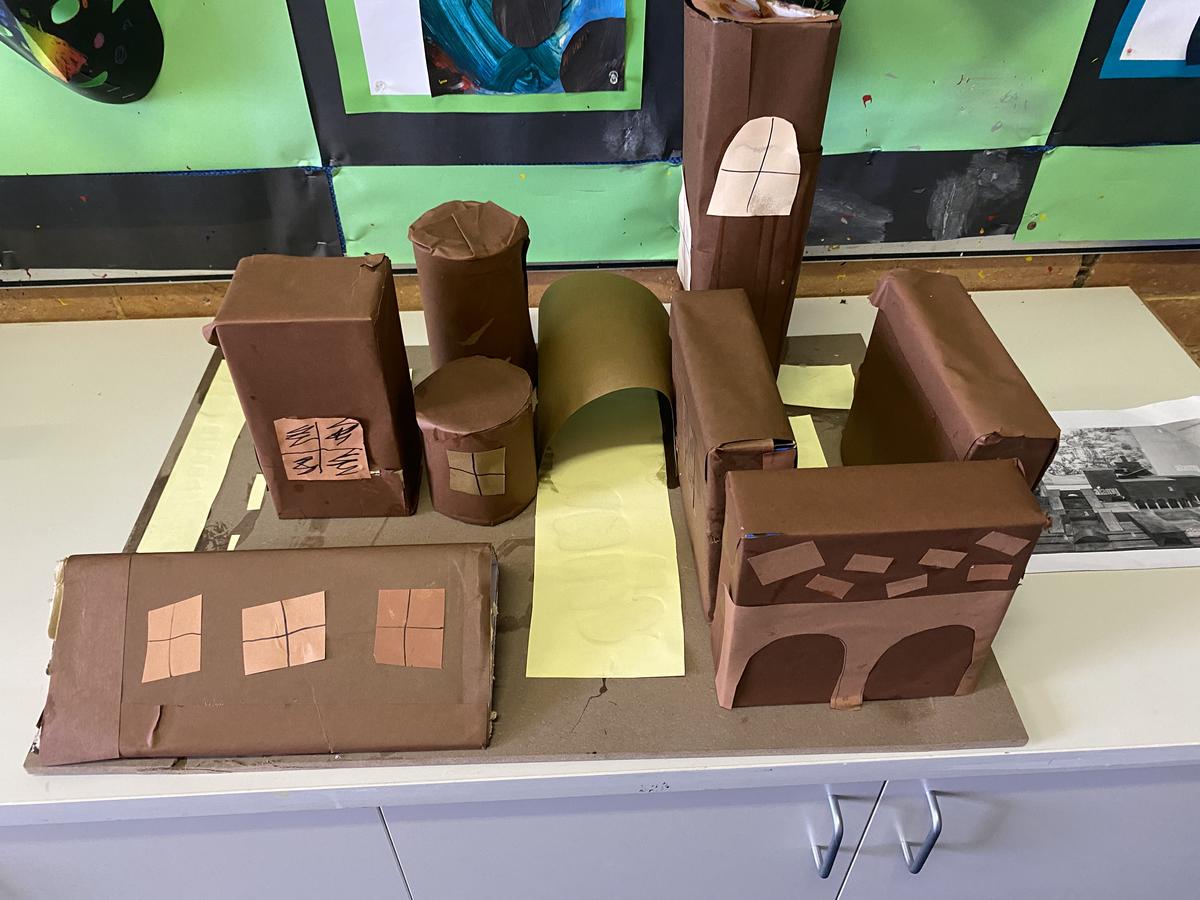









BUONGIORNO!
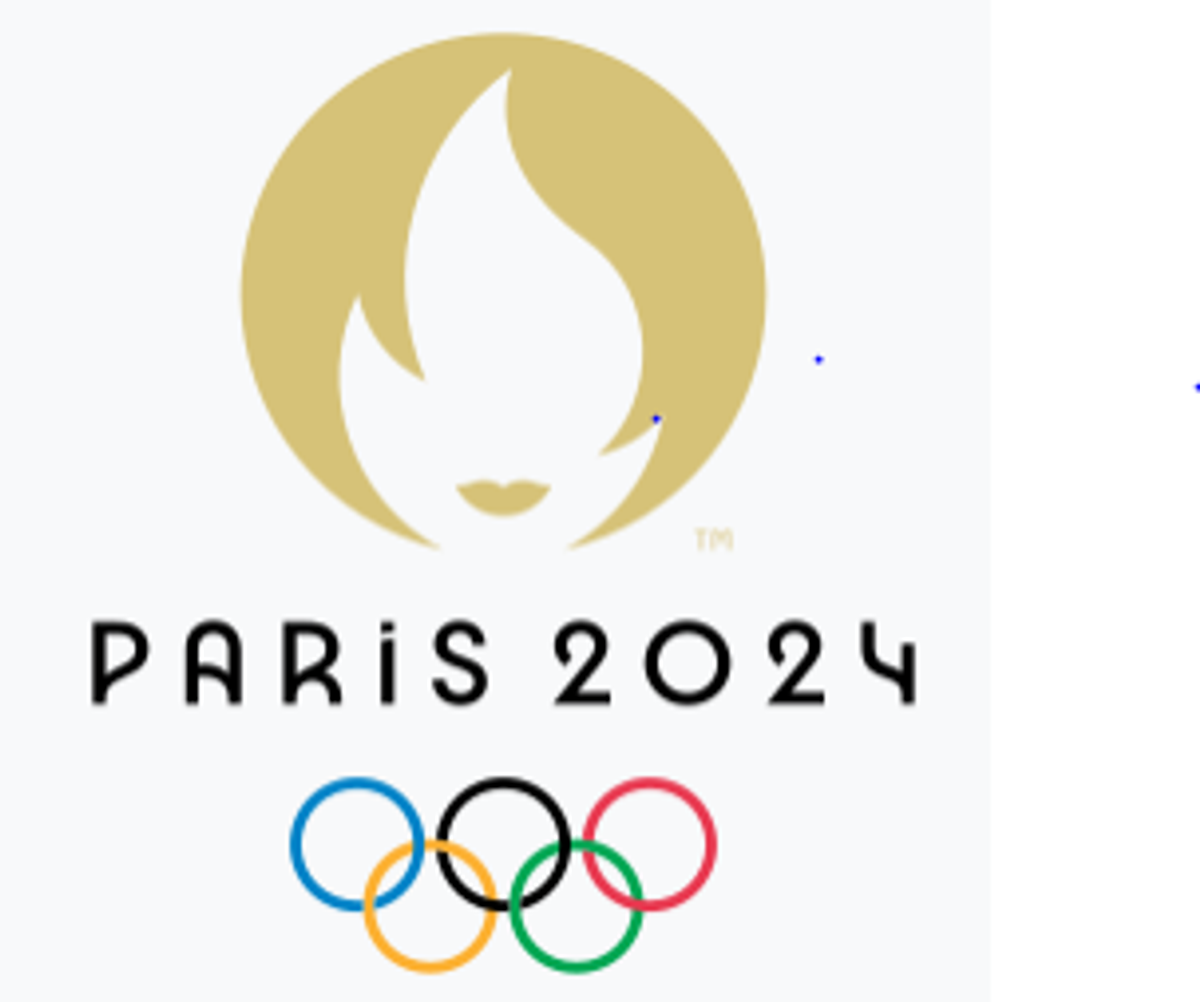

Salve a tutti! (Hello to everyone!)
I hope everyone had un buon weekend and perhaps guardando (watching) some of the 2024 Olimpiadi estive (Summer Olympics) in Parigi (Paris). I certainly did and will continue to do so for le prossime due settimane (the next 2 weeks) or so! 😃
Le Olimpiadi, as most of us know, is a worldwide sporting event that takes place in a different location every quattro anni (four years). There are so many atleti incredibili (amazing athletes) proudly representing their country to compete against other athletes from around il mondo (the world), in order to win a medaglia d'oro (gold), medaglia d'argento, (silver) or a medaglia di bronzo (bronze medal) in their chosen sporting field.
Questa settimana, (This week), I thought it would be a nice idea to include some fun facts about le Olimpiadi in today’s newsletter…
Lo Sai Che…? (Do you know that…?)
Le Olimpiadi Estive


I am sure that there will be many famiglie (families) watching and cheering on gli atleti australiani (the Australian athletes), as well as the athletes of their cultural heritage. I, in particular, will be watching gli atleti italiani (the Italian athletes) compete in their respective sporting events. Having said this, I would like to ask a few domande (questions), regarding Italia (Italy) and the Italian team…Answers will be discussed in class this week.
I hope you enjoyed reading a little more about the 2024 Olympic Games with a little Italian twist. Try to encourage reading the Italian vocabulary (in bold), included in this newsletter, with your bambini. 😊
Alla prossima volta…Until next time, I hope you continue watching le Olimpiadi - Forza Matildas! ⚽
Signora Rosa 🌹